Posts Tagged ‘tough on crime’
Posted on: November 16th, 2016 by Waterloo Region Crime Prevention Council
When you host a public book club, you just never know how things will unfold, much less when you host one with the title “Prisons, Justice and Love”! But we couldn’t have had a more engaging night if we had tried!
Friends of Crime Prevention were pleased to host the first ever “Turn the Page” Book Club with Diane Schoemperlen in November 2016. Scroll through the photos below for a short photo essay of the evening together with community partners, neighbours and Friends.
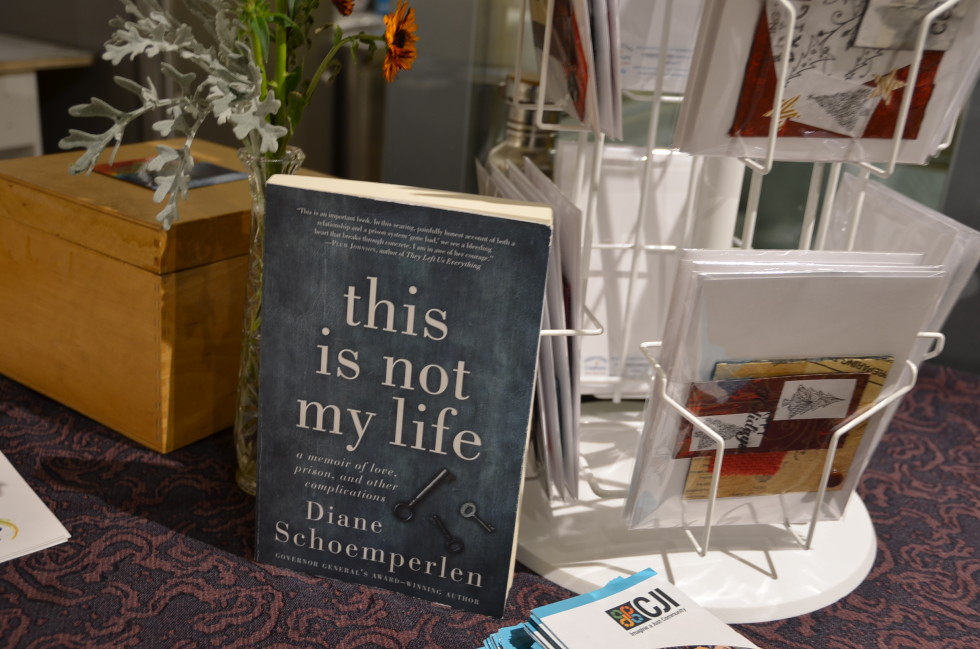
This is not my life by Diane Schoemperlen – our first book club selection for the Turn the Page Book Club focused on prisons, justice and love. A very entangled combination!
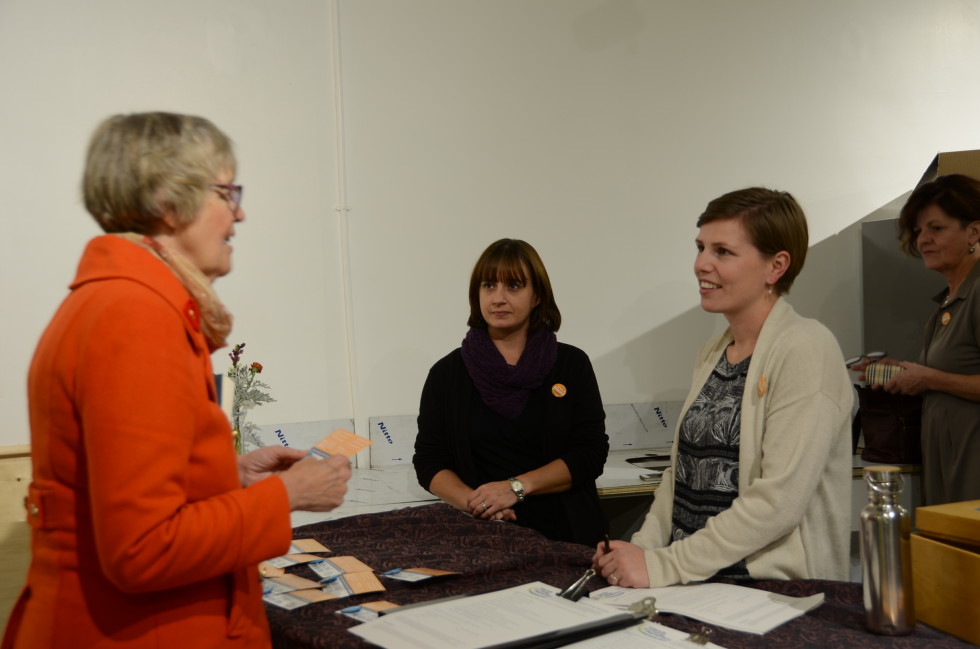
Friends of Crime Prevention, Jenn Robinson (middle) and Lisa Armstrong (right) were the most friendly greeters! Great to see so many new faces.
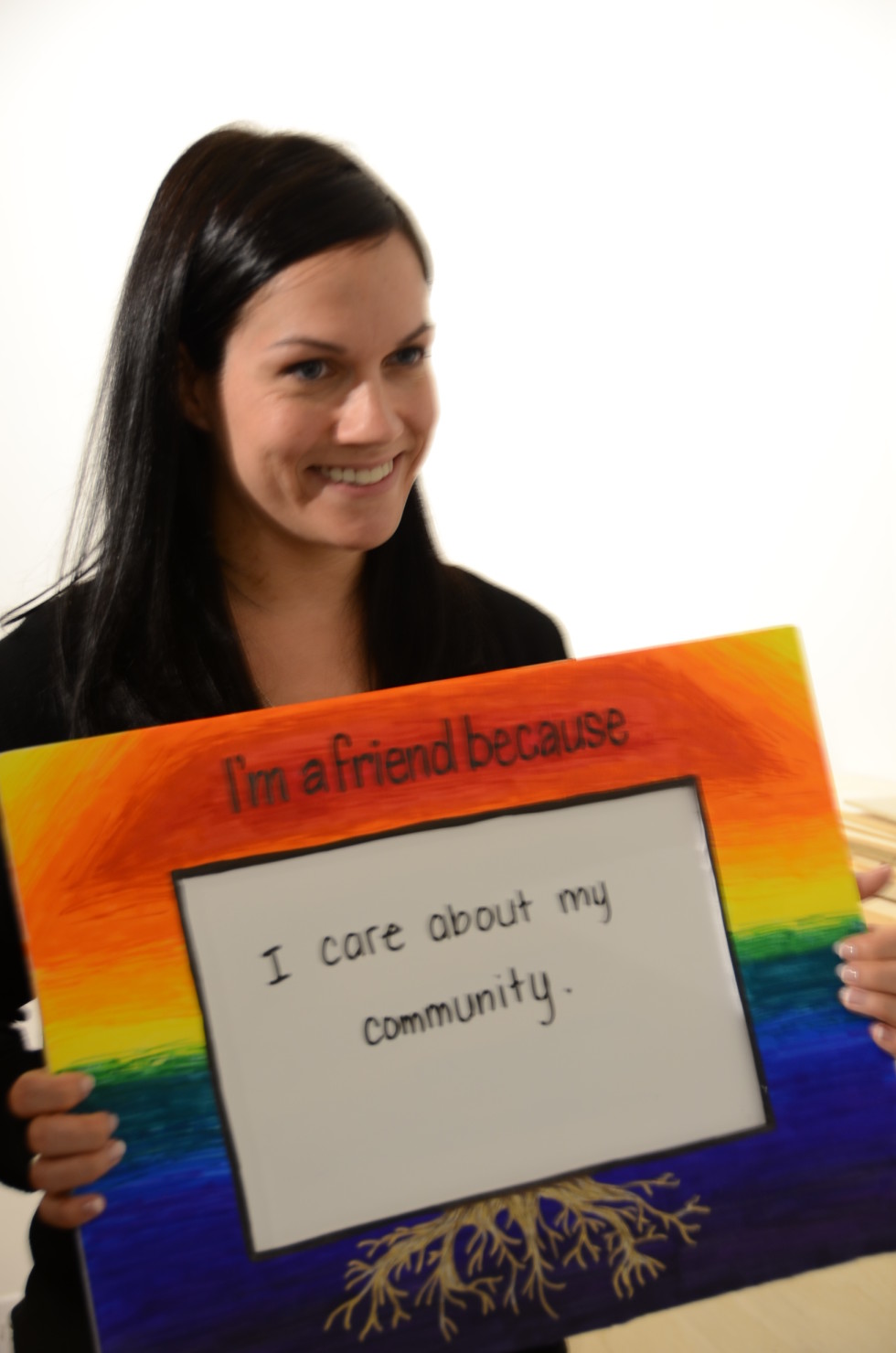
As people gathered for the evening, Friends of Crime Prevention had the opportunity to let us know why they are a Friend. Jeanean Thomas – because I care about my community
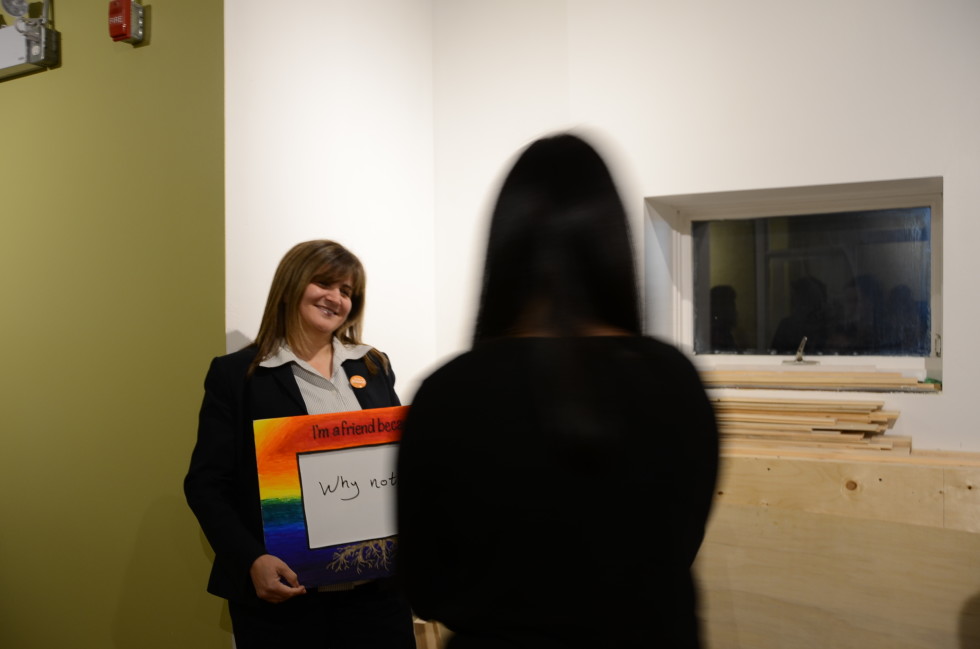
As people gathered for the evening, Friends of Crime Prevention had the opportunity to let us know why they are a Friend.
Pari Karem – Why not?!
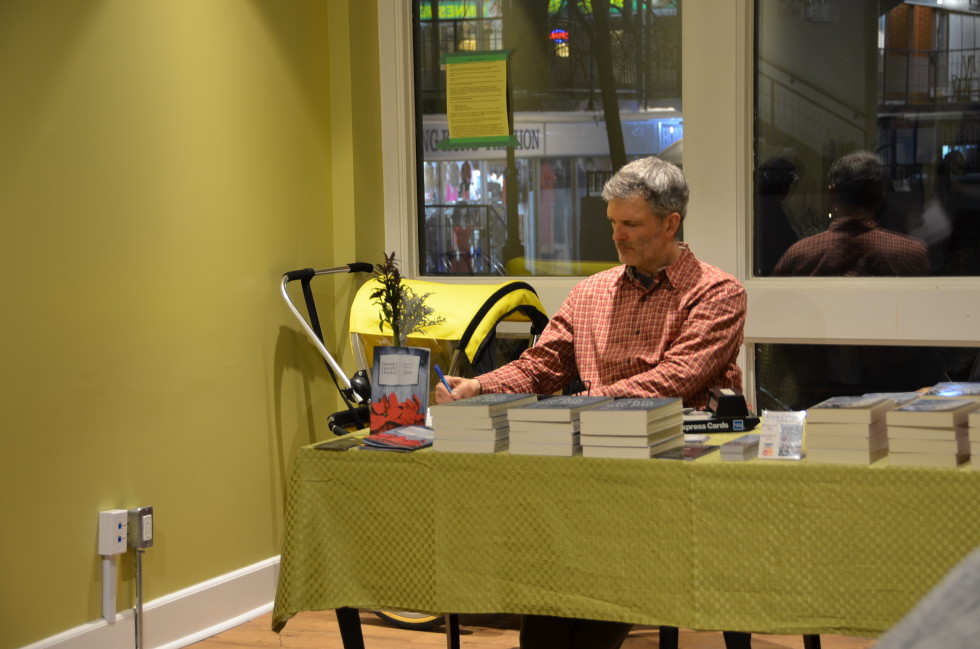
Thanks to John and Wordsworth Books for bringing extra copies of Diane’s book for sale!
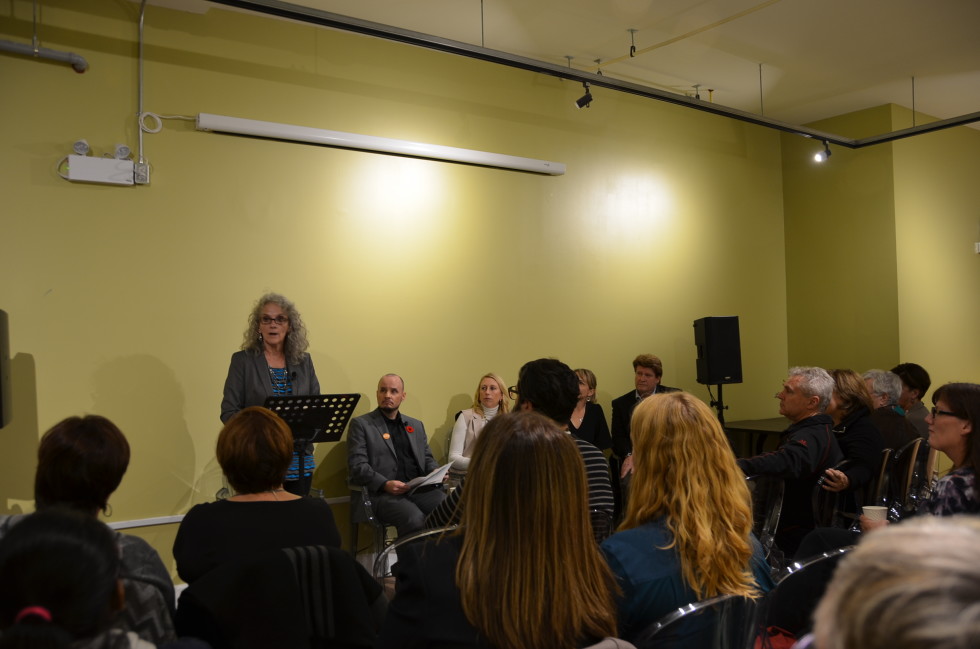
The inaugural Turn the Page Book Club was held at Fresh Ground, a new cafe & community space developed by The Working Centre.
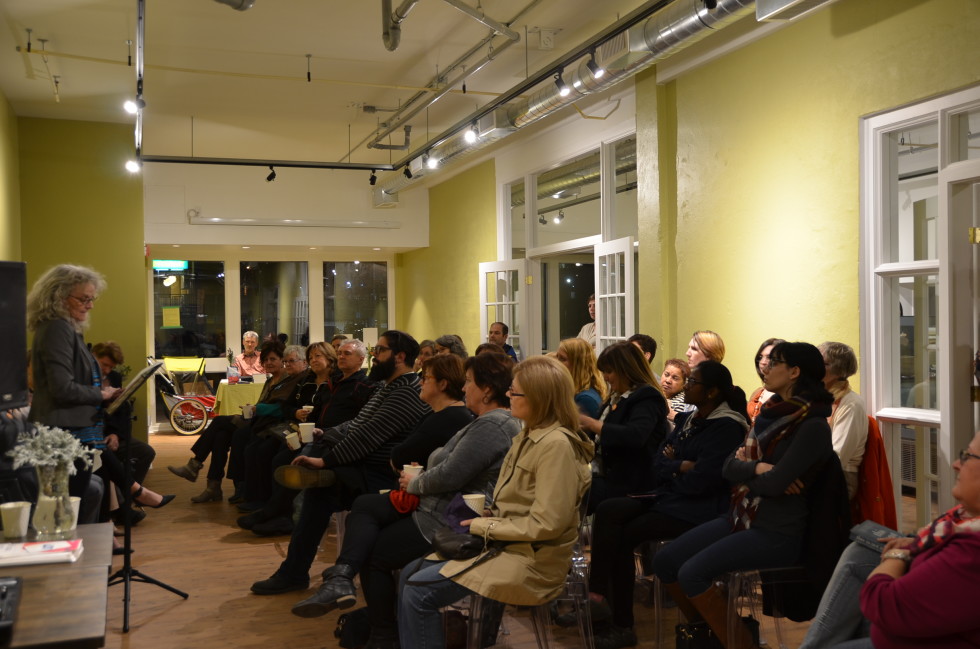
48 people gather to hear Diane read from her new book “This is Not My Life: A Memoir of Love, Prison, and other Complications.
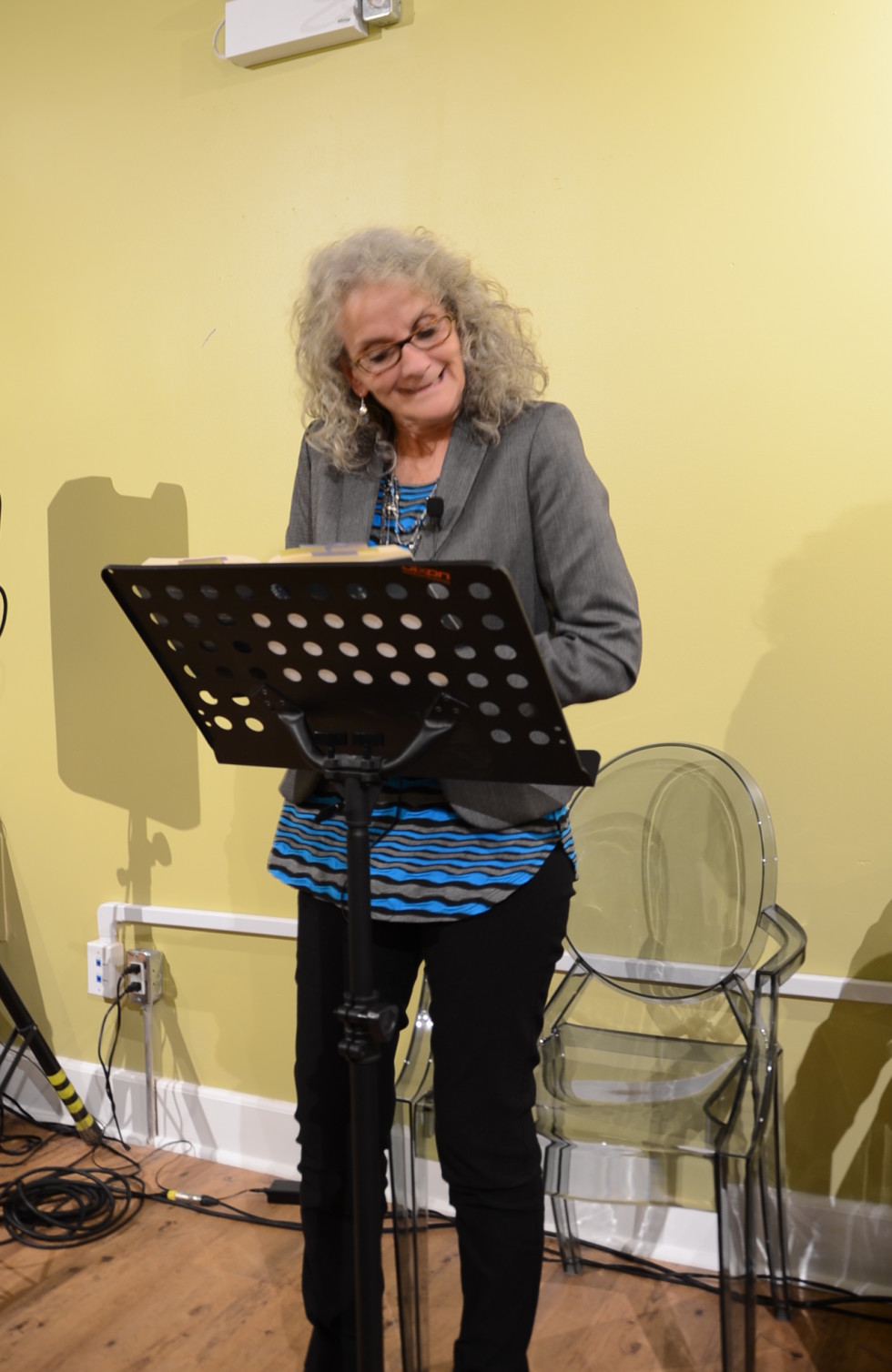
Diane reads the first line of the her book, a first line she is quite proud of! You’ll have to read the book to find out why this line still makes her laugh! Or listen to her interview with The Current on CBC Radio where the host reads it out loud.
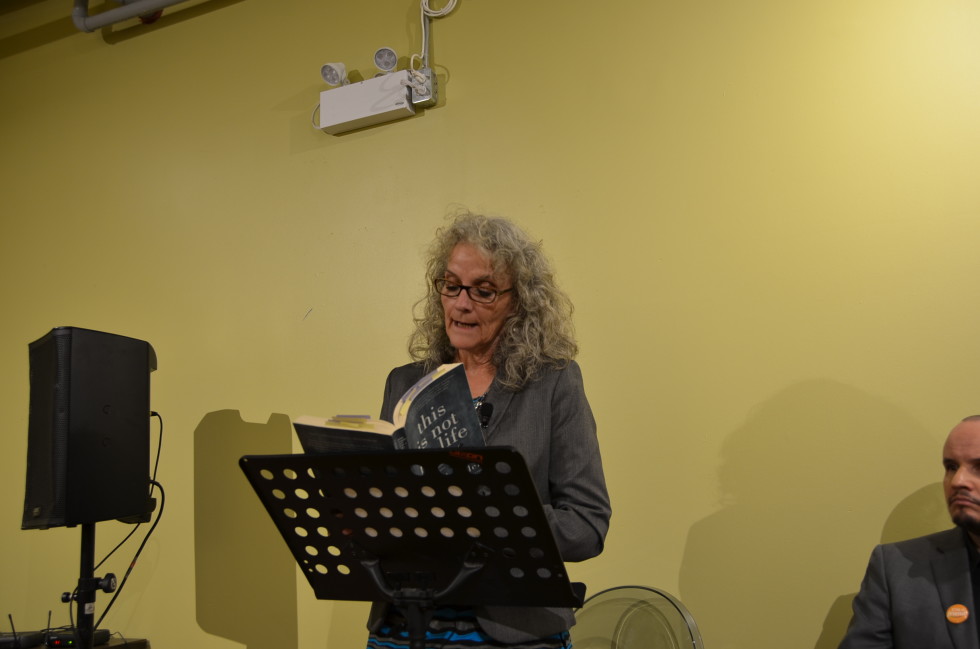
Diane reading some of the more emotionally challenging parts from her book.
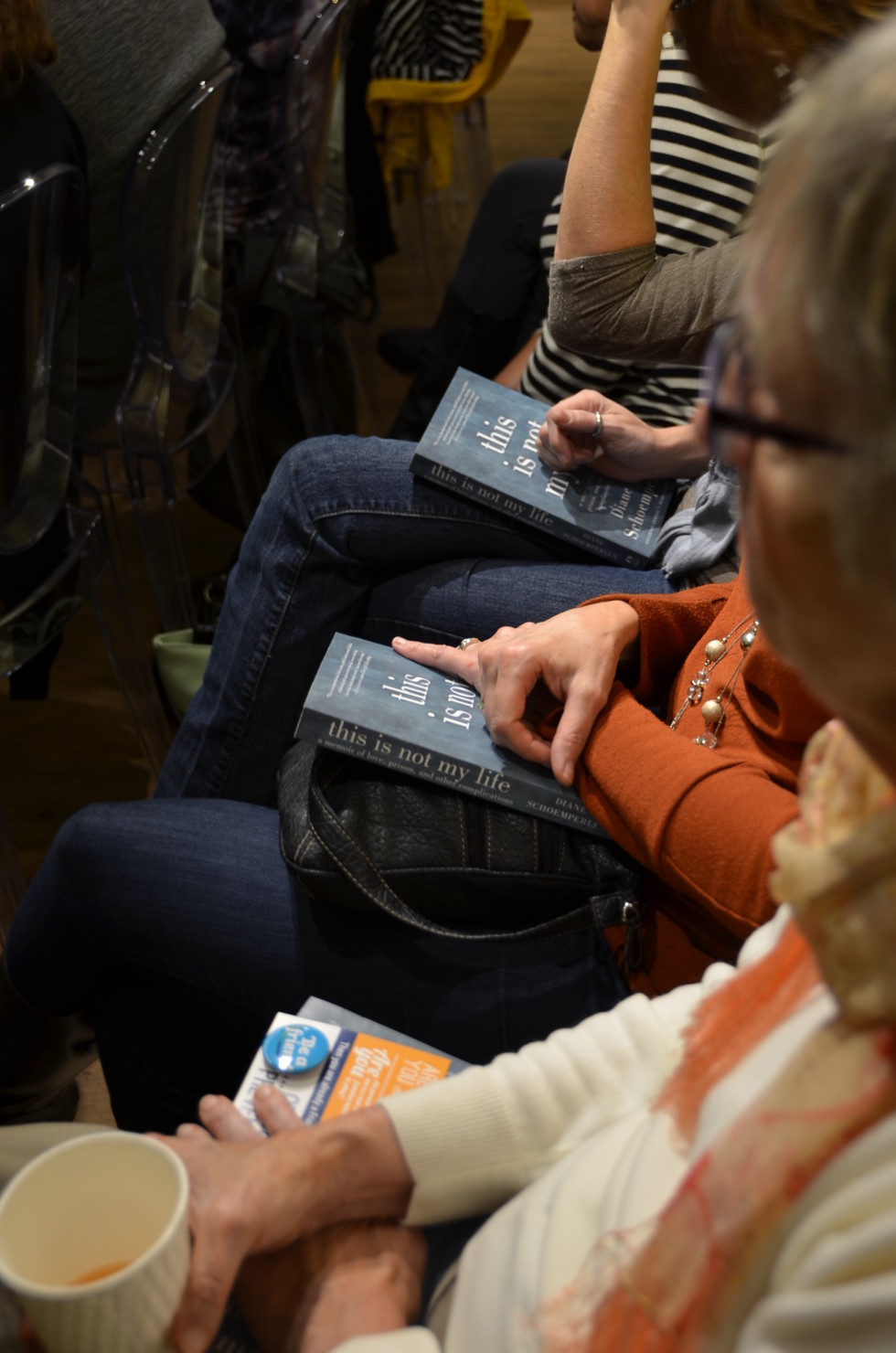
People came prepared! Many had read the book and had very insightful questions. Others came because of the topic, but bought the book by the end of the night!

In addition to a talk and reading by Diane, we invited additional panel members from the community & beyond to complement the discussion of prisons, justice, stigma and relationships. From left: Mike Farwell, Moderator; Diane Schoemperlen, Author; Jen Hutton, Women’s Crisis Services Waterloo Region, Shannon Moroney, Author of Through the Glass; Chris Cowie, ED Community Justice Initiatives
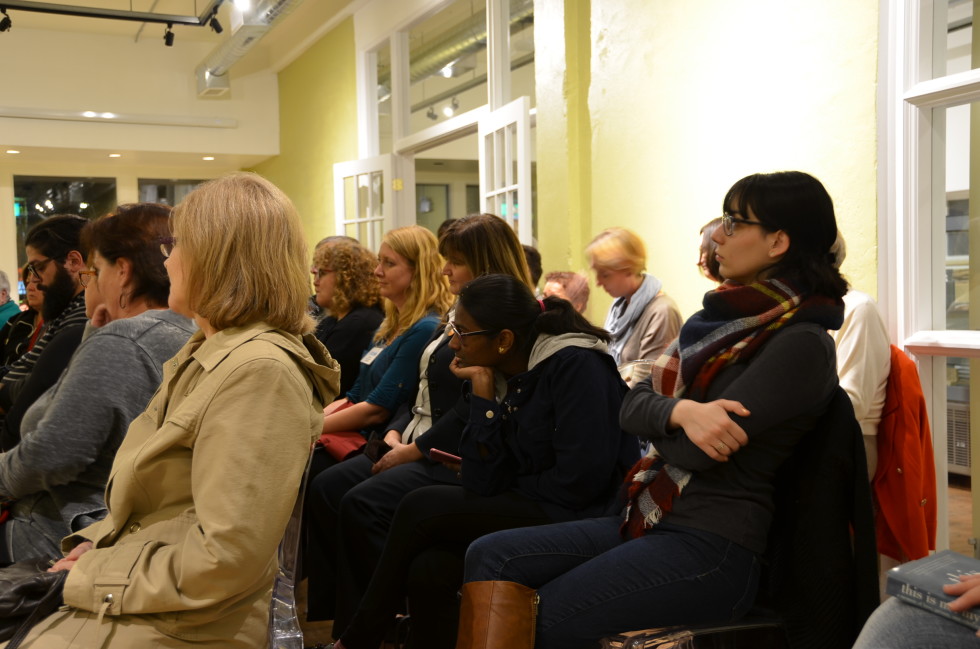
A very intent and listening audience!
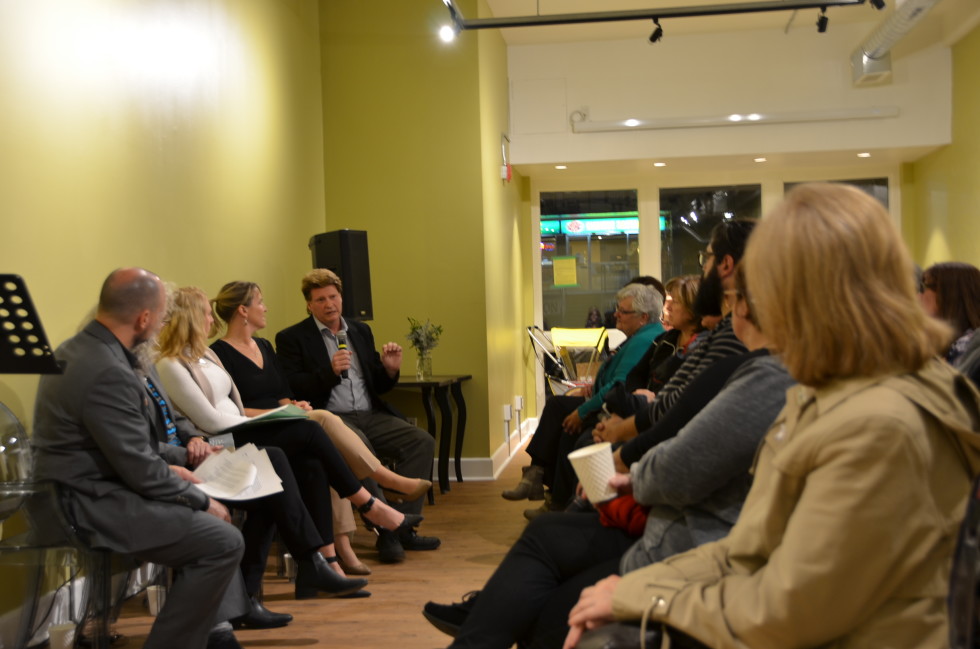
Chris Cowie from Community Justice Initiatives shared about the agency’s Restorative Justice mandate and how a more restorative process in prisons could help in countless ways i.e. better integration into society upon release, deeper understanding of the nature of offending, development of new skills to deal with conflict. Teaching and using restorative justice early can also be a prevention tool.
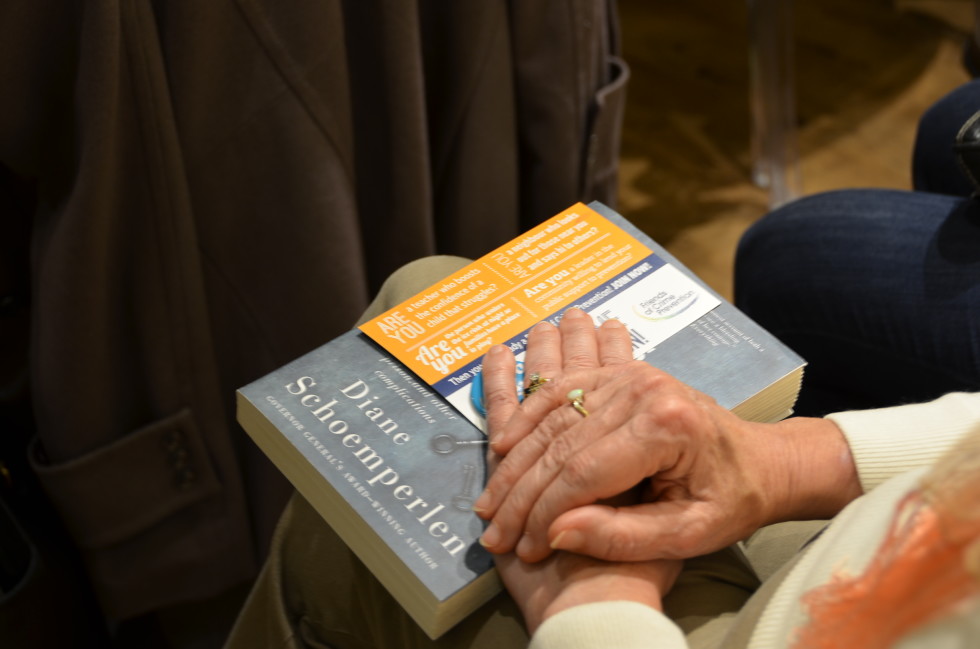
With all the new faces in the audience, it was a great opportunity for many to learn about w hat it means to be a Friend of Crime Prevention!

It only take a few minutes to become a Friend of Crime Prevention – just like Jen Hutton!
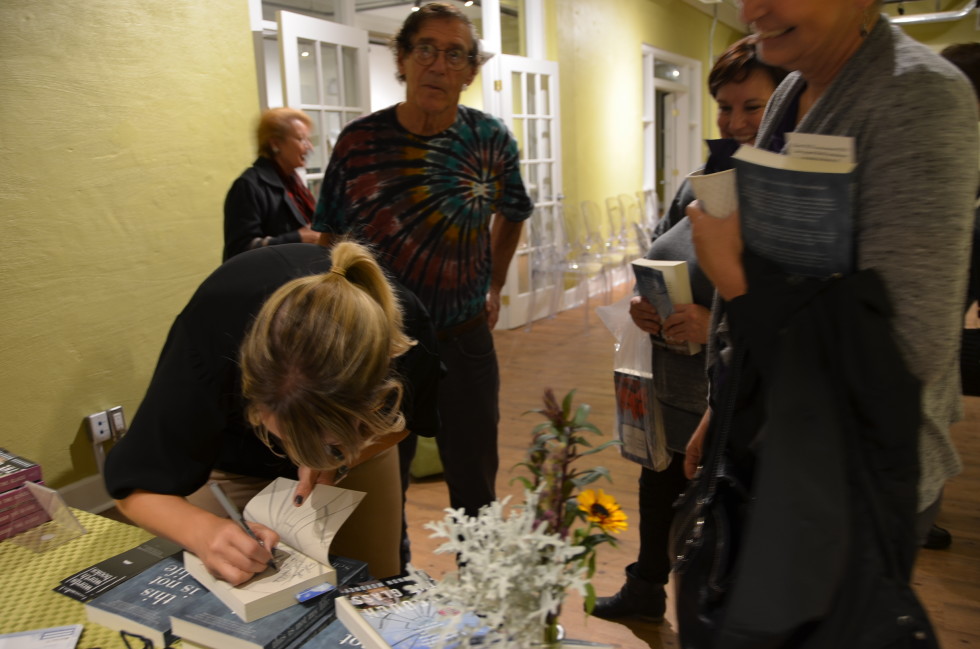
Both Diane and Shannon took time to sign books for anyone who wanted. Also a chance for great conversations.
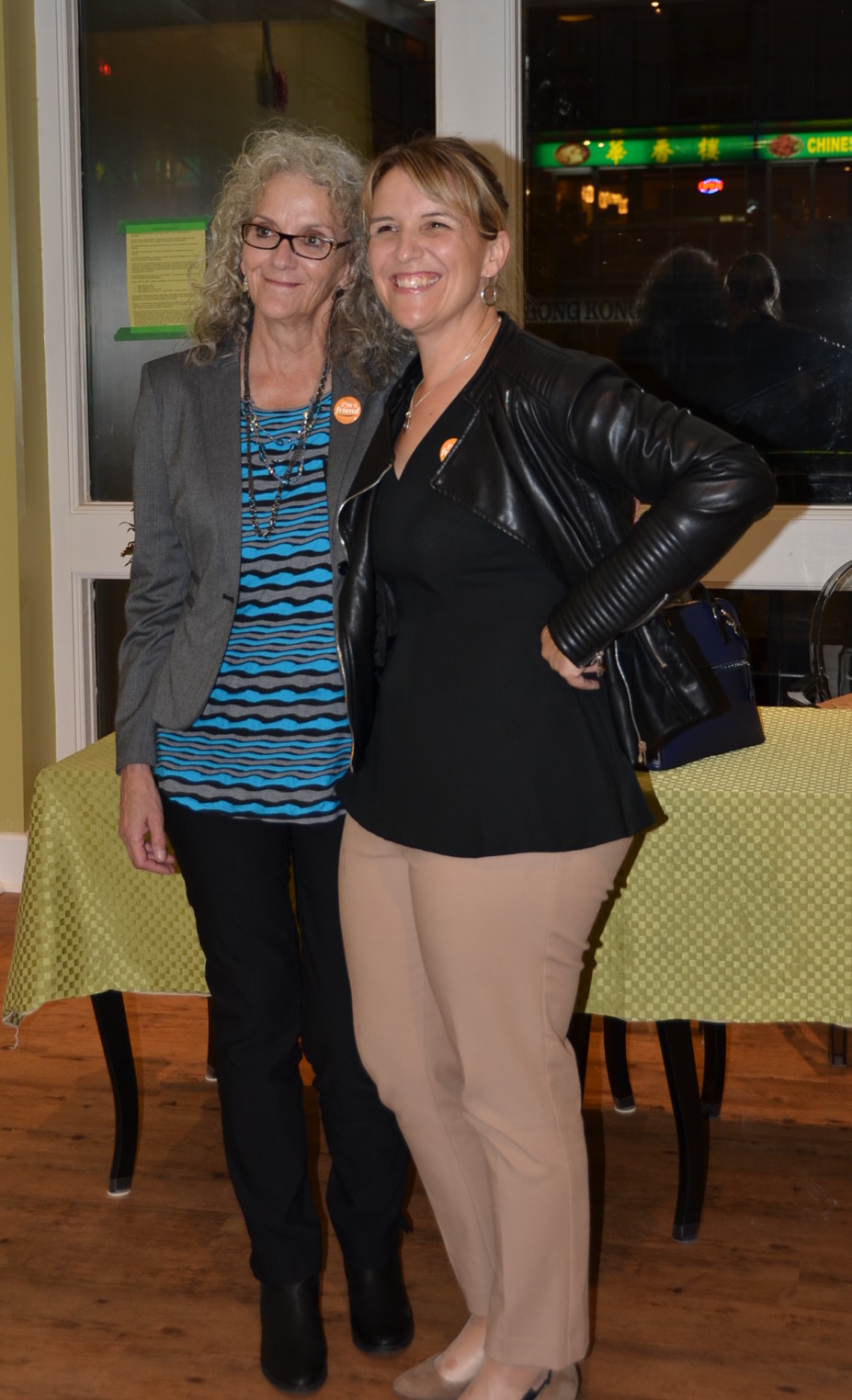
Diane and Shannon proudly display their “I am a Friend” buttons. Diane and Shannon were made honorary Friends and join Howard Sapers and Sir Neville, a guide dog, as Honorary Friends of Crime Prevention.
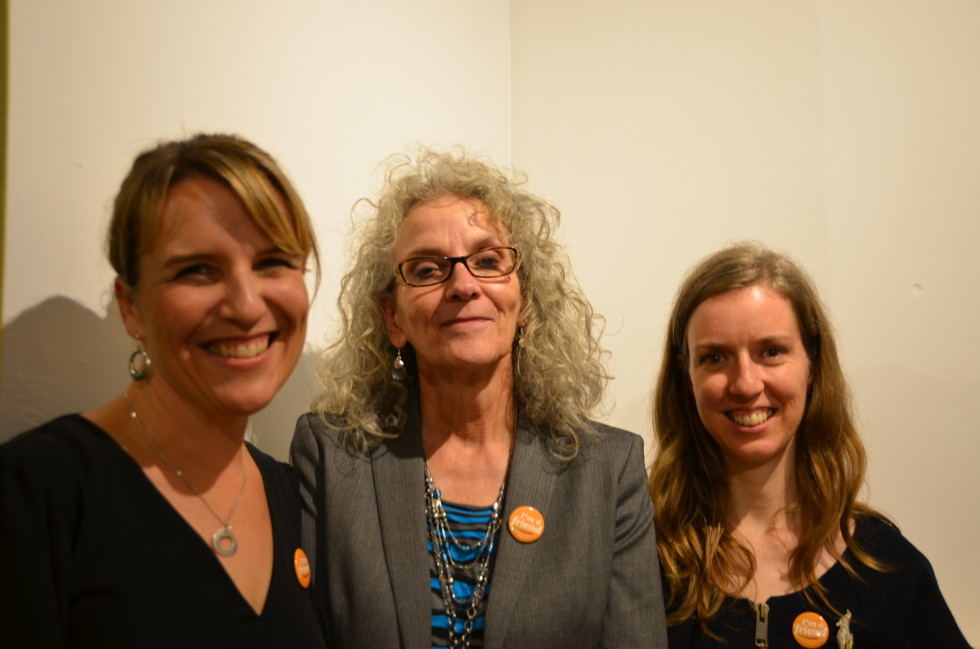
It was very special to have Shannon and Dianne together in the same evening. Shannon acted as a mentor to Diane during the writing of This is Not My Life. Shannon wrote her book Through the Glass about the life upheaval after husband confessed to the sexual assault and kidnapping of two women. Both Diane and Shannon have rich stories from which our community can learn so much! Diane and Shannon are pictured with Sarah Anderson, event organizer and facilitator from the Crime Prevention Council.
Posted on: September 16th, 2015 by Waterloo Region Crime Prevention Council
One of the most anticipated highlights of our year happened last week. In case you happened to miss it (?!) – although, I’m not sure how you could – Howard Sapers was in town. Yes, THE Howard Sapers. Federal Correctional Investigator for Canada and ombudsman for federally sentenced offenders.
We partnered with Kitchener Public Library as part of their new 85 Queen Speaker Series to host this event and filled the auditorium with 230 people from our community. The action packed evening included a screening of the film “State of Incarceration”, a keynote address by Howard Sapers and a panel discussion with community members, including a formerly incarcerated woman from Grand Valley Institution for Women.
-
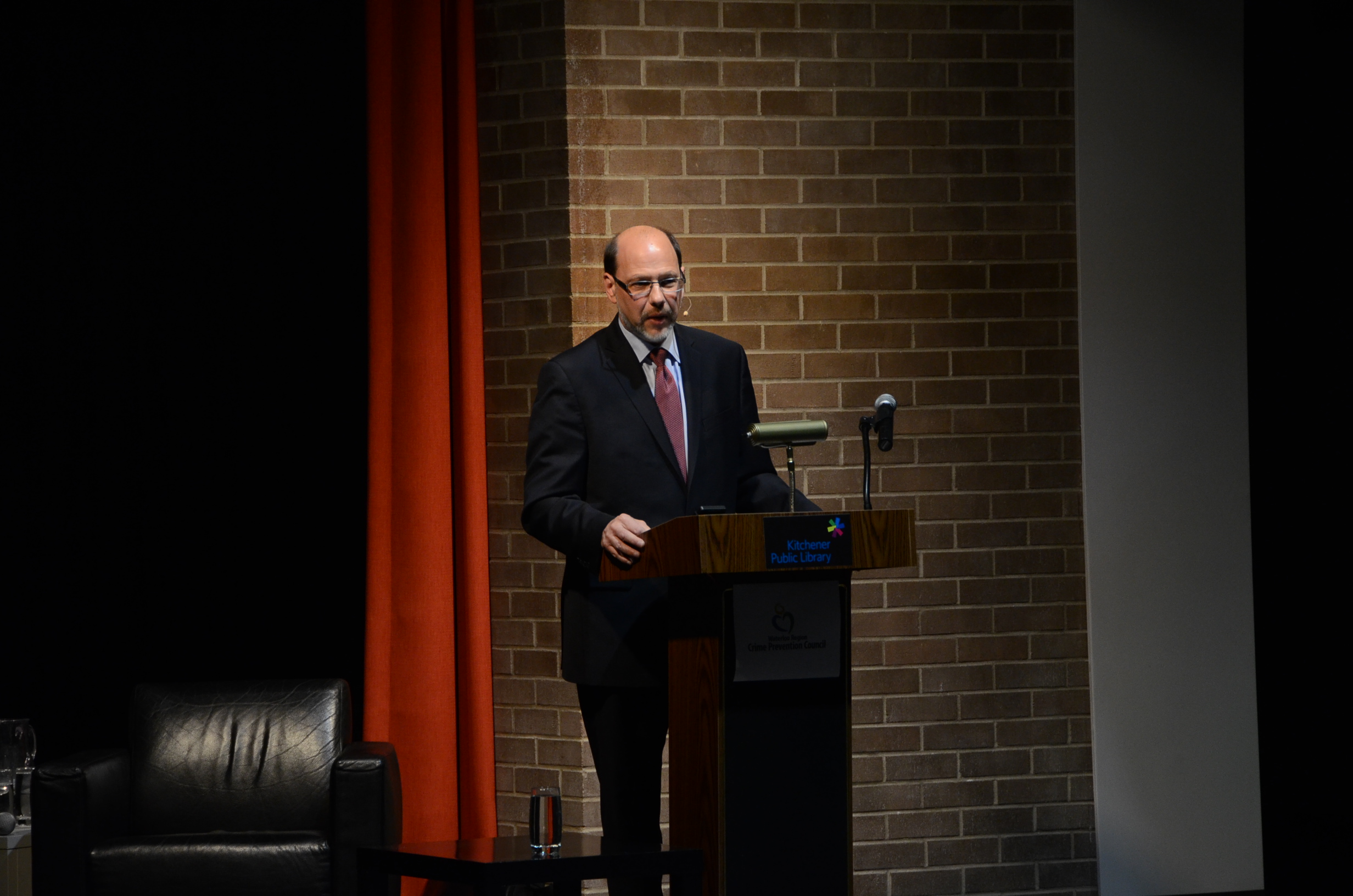
-
Howard Sapers oversees the Office of the Correctional Investigator, serving as an ombudsman for federally sentenced offenders.
-
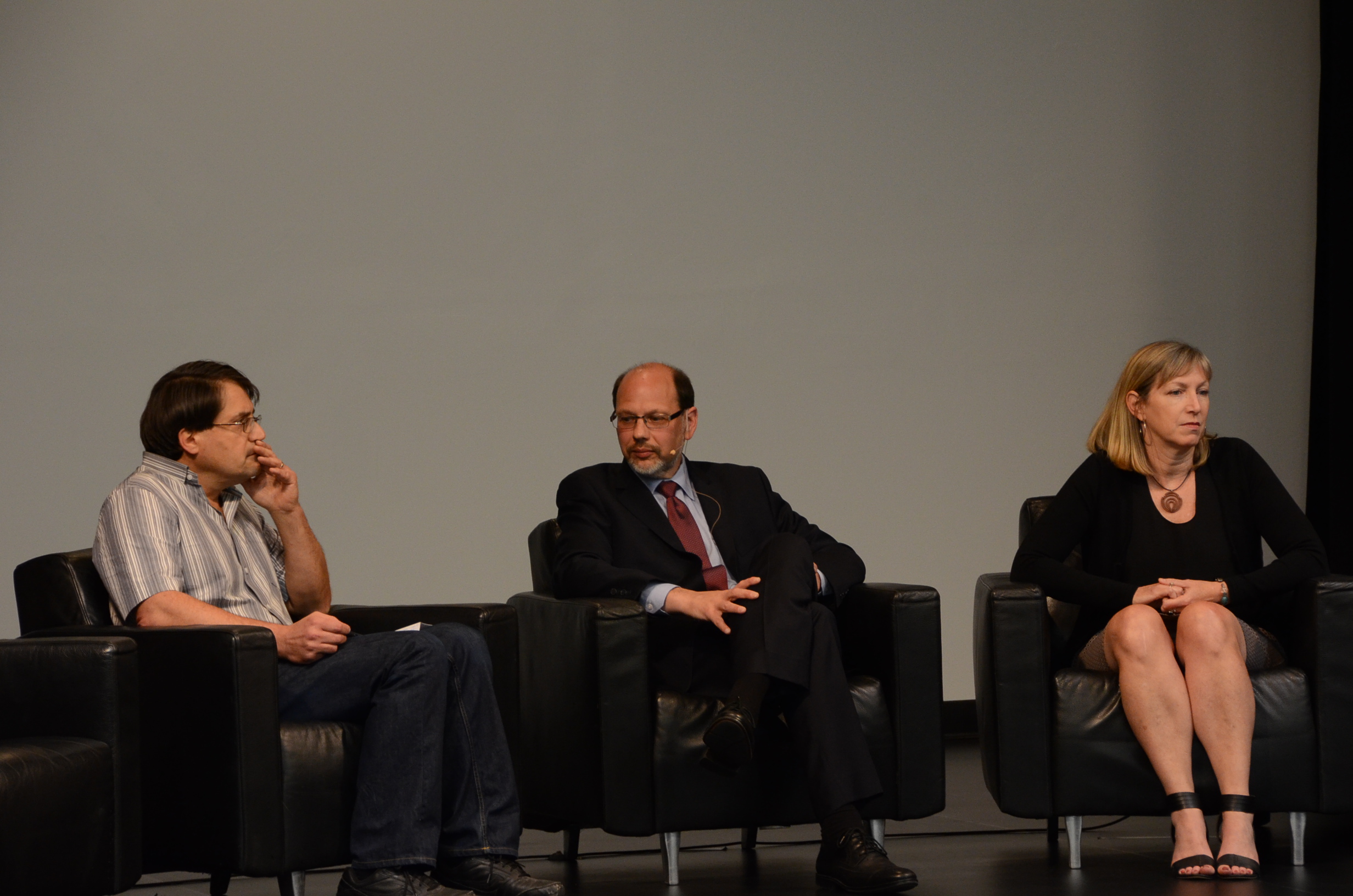
-
Panel with (from left) Chris Cowie from Community Justice Initiatives, (off camera) Joe Mancini from the Working Centre, Howard Sapers, Julie Thompson from CJI, and Dionne, (not seen, pseudonym), a former federal inmate.
-
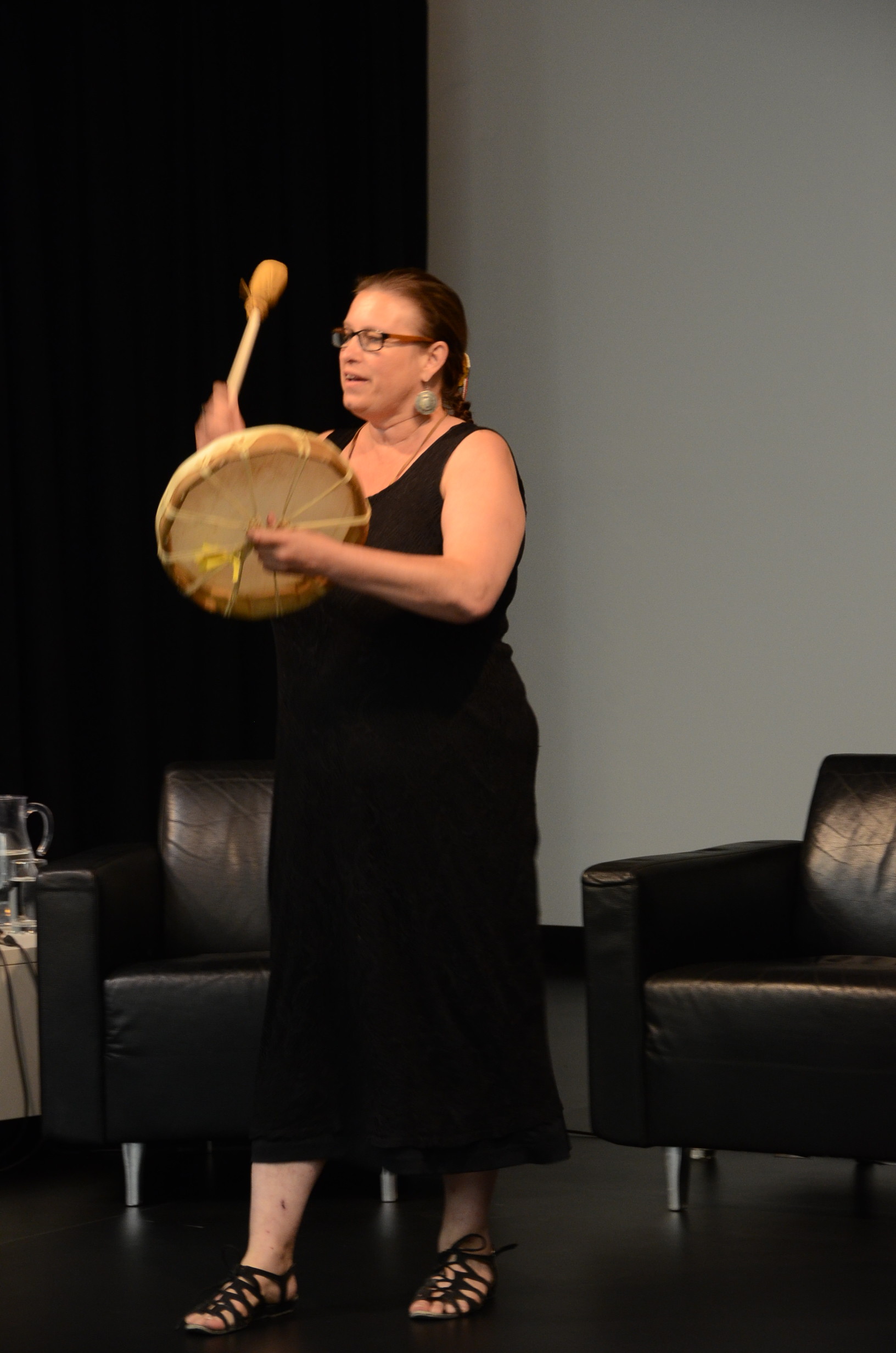
-
Aboriginal drummer Heather Majuary closed the event with drumming in honour of incarcerated Aboriginal lands.
-
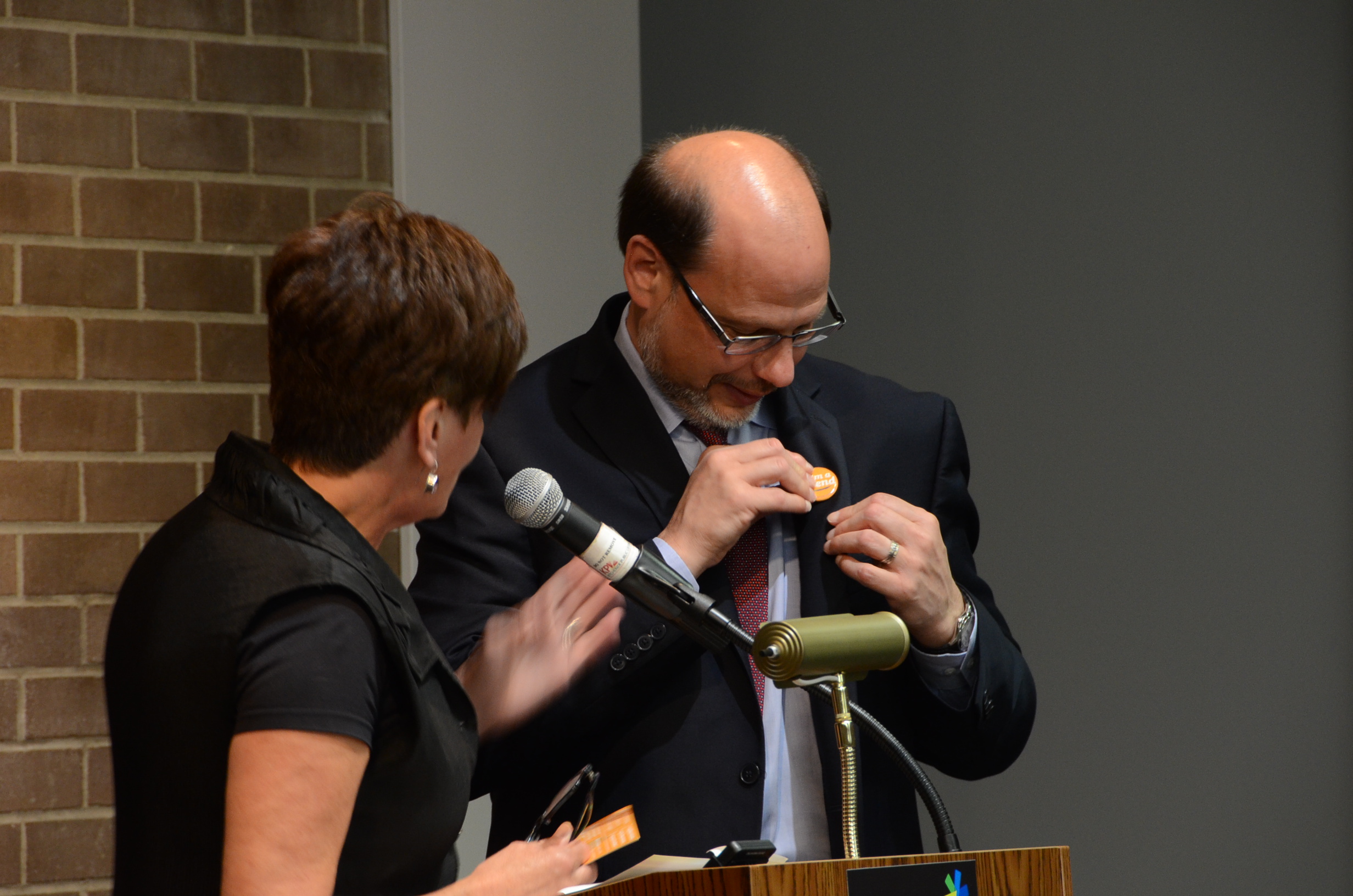
-
Howard Sapers becomes our first honourary Friend of Crime Prevention!
-

-
Howard Sapers chats with an attendee who is currently a minimum security inmate. [Source: Kitchener Public Library]
-
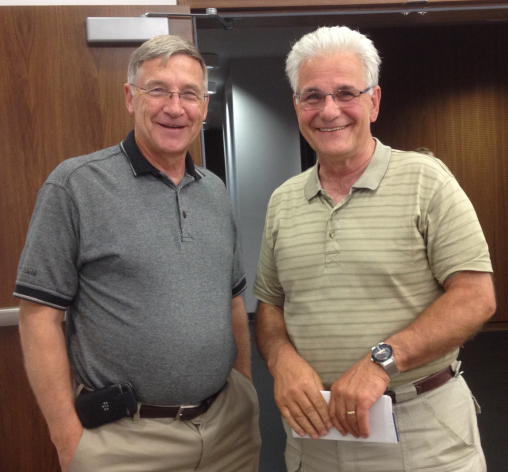
-
Regional Chair Ken Seiling with former parole officer Mark Yantzi, a pioneer in the field of restorative justice and past Executive Director of Community Justice Initiatives [Source: Kitchener Public Library]
-
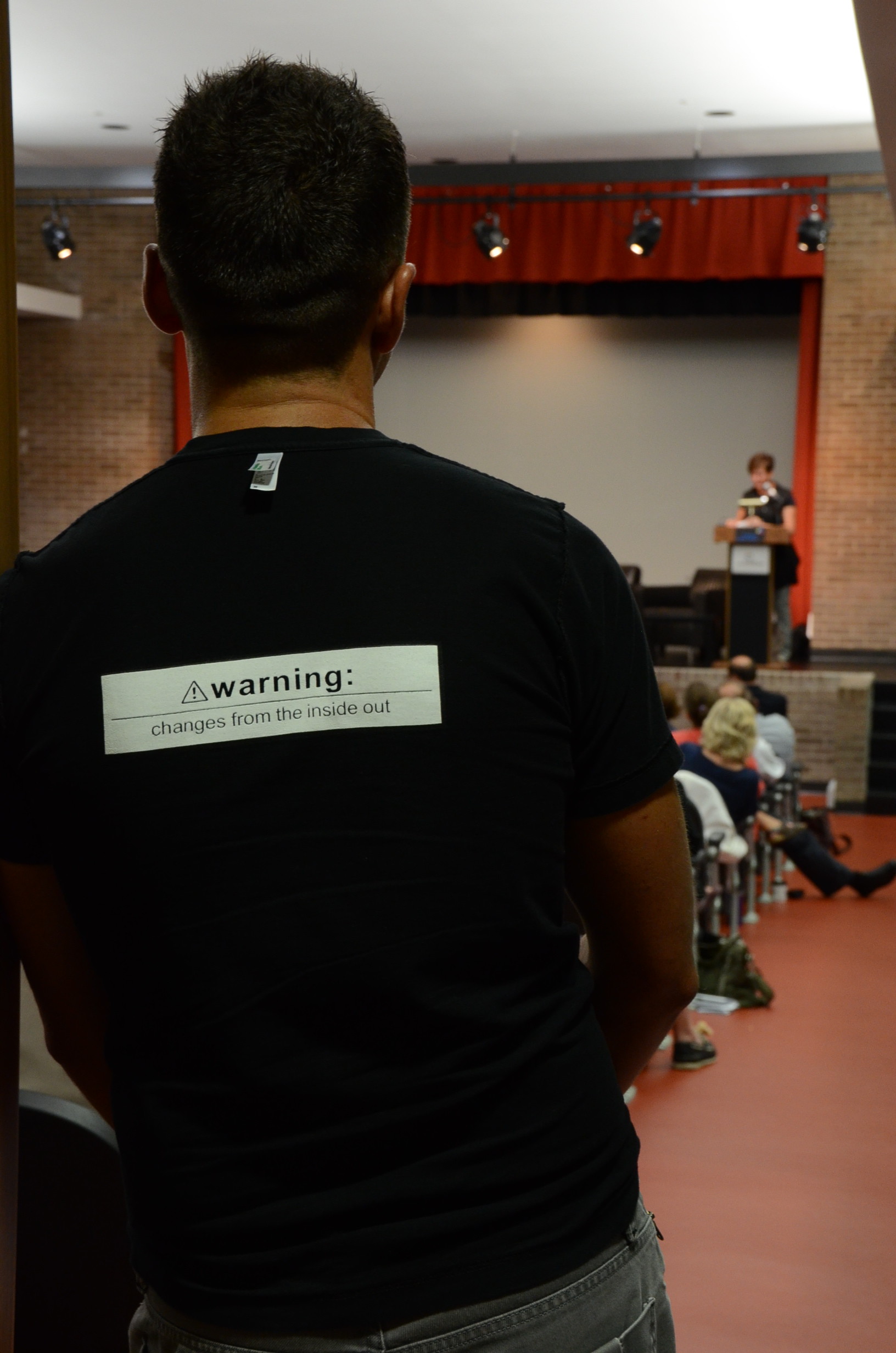
-
It’s true, change really does start from the inside. And that’s what Friends of Crime Prevention events are all about!
-
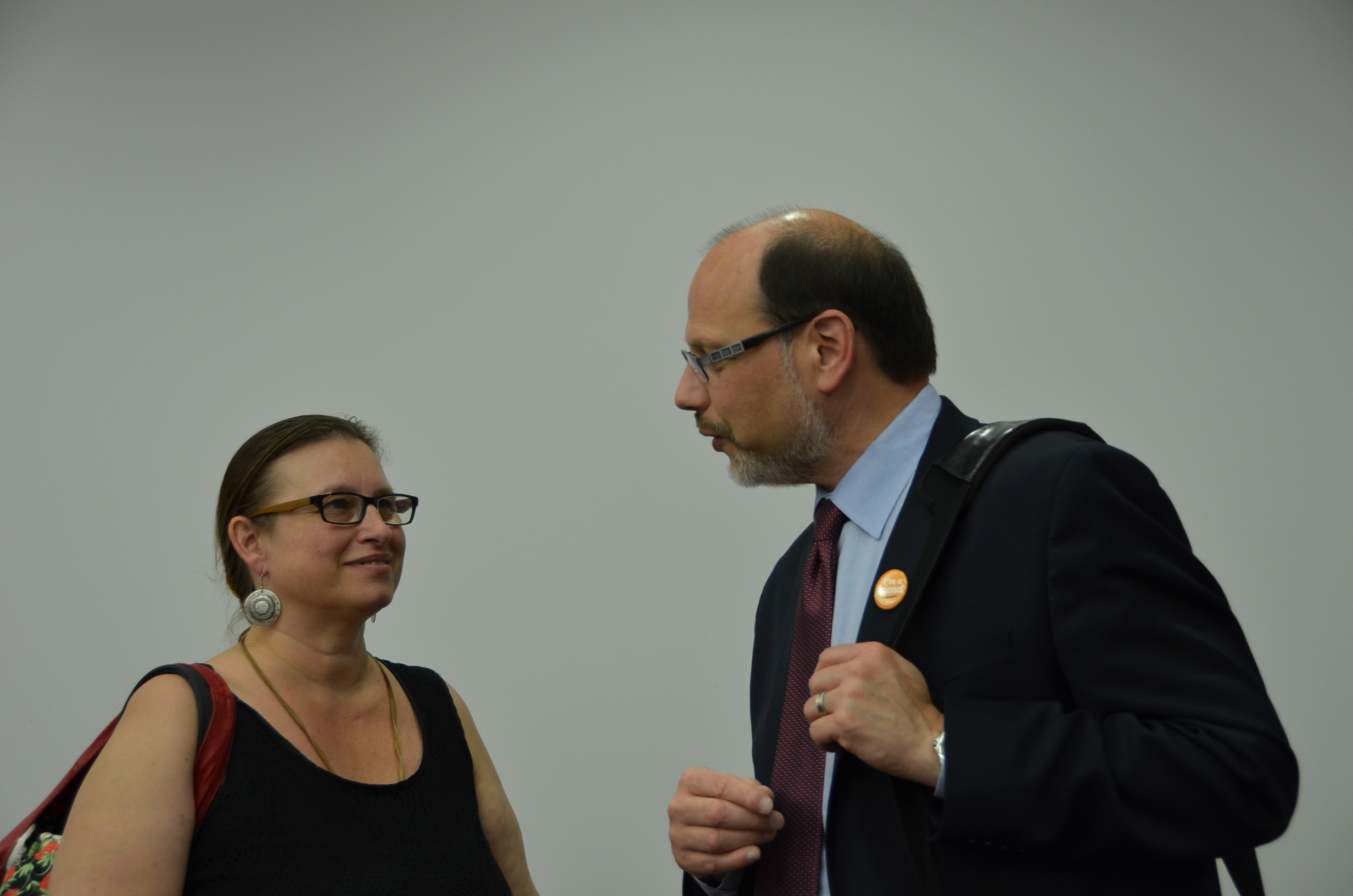
-
Howard Sapers chats with Aboriginal drummer Heather Majuary, who closed the event with drumming in honour of incarcerated Aboriginal lands
We have a video coming soon of Mr. Sapers’ keynote talk, but in the meantime, you can read his presentation here to catch all the incredible stats and stories he shared that night. He really does effectively paint a vivid picture about the state of Canadian prisons in 2015.
While you wait impatiently for the video, I”ll leave you with these two reflections from two currently incarcerated women from Grand Valley Institution for Women who attend the event. You’ll understand why it was such a big night.
Julie writes:
“I attended the forum for Friends of Crime Prevention, on September 10, 2015. I cannot begin to tell you how refreshing it is that discussions such as this are taking place. I was both shocked and pleasantly surprised at the amount of progressive people who attended the forum. There are faces and lives associated with the disturbing statistics Mr. Saper spoke of – mine is one of them. I was one of two currently incarcerated women at the event, with the Walls to Bridges Collective. Too often incarcerated people are treated as the rejects of society, disposable even, and let’s face it – advocating for us is not at the top of almost all priority lists. I firmly believe that many incarcerated people would not be in the criminal justice system to begin with, if they had been afforded access to and utilized stronger and earlier preventative measures through social intervention and more accessible social and health services; myself included. Sadly, I did not consider the flaws in our systems until I was directly affected. Now that I am, however, I cannot turn a blind eye to them anymore, not just for myself, but for the staggering amount of other people making up those statistics, and for those yet to come. I am relieved to know I am not alone in this quest. All human life has value – thank you for making “out of sight” not be “out of mind” anymore. The forum helped to humanize us and highlight some of the injustices of our daily reality. I left with a renewed sense of hope and purpose. I am thankful that this forum created a safe place for people to come together, ask questions, and push boundaries. To evoke much needed change will require more bridges to be built than walls. We have a long way to go, but I am hopeful that just as a storm starts with a single raindrop, so too does change start with forums such as this one.”
Denise writes:
Just as the world will always remember September 11, 2001, in a negative light, Thursday, September 10, 2015 will be etched in my mind for as long as I exist as an achievement to social awareness. You see, since my incarceration it was the only day in which I came in contact with people besides volunteers and members of the Walls to Bridges group and voice my dilemma while feeling safe to bare my soul. Mr. Howard Sapers provided statistics that were both daunting and hopeful. Information on how tax dollars are truly spent to build and house a growing prison population at a time where the crime rate for the past decade plus has been on the decline. I am part of those statistics and Canada is following the footsteps of the failed American system that ex President Bill Clinton and present sitting President Barak Obama stated ‘is not working’. The large majority of incarcerated people will be released and upon their discharge, are expected to function and contribute to the same society that deemed them as criminals. If education is at least a gateway to success, incarcerated people need more training to learn and utilize skills and tools required to help them successfully add to the fabric of society’s fast paced, ever changing existence. Prevention, Prisons & Popcorn at Kitchen Public Library was a forum that brought together a community of progressive thinking people aware of the challenges society will surely be faced with once the voiceless, faceless people are unconstrained. An awareness of prisons and the need for community inclusion upon the release of prisoners are part of an encompassing subject tax payers don’t realize every member of a community may be accountable for. After someone goes from inmate to civilian because they have paid their dues to a faulty justice system and they no longer live in the past where they made poor choices, when do they get a fair shot at being seen in a new light? There needs to be more discussions such as the one Prevention, Prisons & Popcorn opened up where communities are aware of their interconnectedness to their surroundings, even their walled surroundings.
Yep, it was that kind of night.
Posted on: April 7th, 2015 by Waterloo Region Crime Prevention Council
Back in February 2015, the Church Council on Justice and Corrections (CCJC), released a very promising evaluation report on the Circles of Support and Accountability (CoSA) program that operates across Canada. CoSA is a “community-based reintegration program, grounded in restorative justice principles, that holds sex offenders accountable for the harm they have caused while assisting with their task of re-entry into communities at the end of their sentences”.
The evaluation, the first of its kind in Canada, gives an in depth description of how the program works, documenting it’s success rate and cost savings due to reduced recidivism and reoffending. In short, the evaluation says that this program works.
Great news!
But then, on March 2nd 2015, it was announced that as of March 31, 2015, Correctional Services Canada (CSC) would not renew the funding it has been providing since 1996, as a partner to CoSA. The program has additional partners in numerous Canadian cities such as the Mennonite Central Committee Ontario (MCCO) for the program operated in Kitchener, Hamilton and Toronto. MCCO has funding from CSC until March 31, 2018.
CoSA Canada quickly released a statement to clarify and restate the real impacts of this program: a proven model that addresses a high risk crime against vulnerable people in a humane and accountable way and shows that it can reduce recidivism of the highest risk sexual offenders by 70 – 83%.
This is what we at the Crime Prevention Council would be inclined to call a “smart on crime” approach to reducing crime and victimization:
- the program is based in good evidence,
- the approach is measured and documented in similar ways across programs,
- it has produced excellent results,
- it is proven to reduce and prevent further crimes at a lower cost than keeping an individual incarcerated for “life”, and,
- helps to reintegrate individuals into our community, which is where 95% of people exiting prison, including those convicted of sexual offenses, will return eventually at the end of their sentences
Meanwhile, this ‘made in Canada’ approach has been successfully exported to a number of jurisdictions in the U.S. and the U.K., in addition to France, The Netherlands, Italy, Australia, New Zealand, Latvia and South Korea.
When programs show that they accomplish what they set out to do at comparatively low investment and provide a high return on investment to the safety of our community, their sustainability is not only vital, but smart and it makes so much more sense to support of them rather than cut them.
As such, the decision by CSC to cut funding for CoSA is tough to understand and needs further dialogue and consideration.
Posted on: March 25th, 2015 by Smart on Crime
Never have I seen such a beautiful collection of voices, all unique, and yet all singing the same tune. The Everyday: Freedom from Gendered Violence Symposium put on by the Social Innovation Research Group, and brilliantly detailed by Jay Harrison here, was a phenomenal representation of the intersection of research, arts, and community work. While the Symposium had a particular focus on the university experience, its messages are equally applicable in our neighbourhoods and communities as we think about crime prevention and smart approaches to the gendered violence that occurs in those spaces.
I don’t think I could ever do justice to the amazing topics that were discussed – responding to disclosure, the particular experiences of gendered violence faced by racialized and LGBTQ students, engaging men in prevention, and more. So, I thought the best way was to provide some insight from the speakers themselves:
“What does it mean to be safe?” –Dr. Jenn Root
I sat and thought, ‘good question!’ How can we talk about safety without first talking about what that means? Discussions of violence and crime prevention should always start at the roots.
“Public space is not equal for everyone.” –Tatyana Fazlalizadeh
This rang true for me. How many times have I called a friend or family member to pick me up because I didn’t want to walk alone?
“Did that really just happen?” –Dr. Michael Woodford
Dr. Woodford was speaking about the slurs and comments made to LGBTQ students. But for me, I was struck by the thought of how often we doubt ourselves, as well as our friends and our families when they tell us about something seemingly “minor” is said to them: ‘Oh come on, it’s not so bad…’
“Street Harassment is abuse.” –Tatyana Fazlalizadeh
Tatyana amazed me with this beautiful comparison of street harassment to domestic violence: if a man was yelling derogatory names at his wife, we would call it abuse. When women have cat-calls yelled at them from across the street, however, we tend to brush it off and ignore it.
“The kind of terrorism I want to talk about in this country is domestic violence.” –Judah Oudshoorn
While the media and our governments continue to feed us horrible stories of the atrocities occurring under the umbrella of terrorism, sometimes we forget about the atrocities happening much closer to home – maybe in our homes, maybe in our neighbour’s home.
“Sexual violence is a strategy of war – it is not just against the women, but also the community – it is an attempt to demoralize the community.” –Dr. Eliana Suarez
At the Crime Prevention Council, we often talk about the role of community as a building block for crime prevention. If sexual violence is designed to demoralize a community, then we, as that community, must take a leading role in preventing it.
“Either you’re violent, silent, or creating meaningful change. And if you’re silent, you’re violent.” –Judah Oudshoorn
What a powerful statement. I know which role I choose to play.
“Women are not just resilient, they are resistant – they attempt to change their circumstance.” –Dr. Eliana Suarez
“Maybe there is more than one way to be a man.” –Stephen Soucie
I felt these two quotes belonged together. Discussions around gendered violence often leave me feeling sad and hopeless. But these two spoke of hope, optimism, and change for both men and women.
“It is easier to build stronger children than to fix broken men.” –Stephen Soucie
Again, I felt another ray of hope. Through my research at the Crime Prevention Council, I have learned that early interventions have astonishing success in reducing rates of crime. This is where I think we should be investing our time, energy, and dollars.
“Compliance is important, but compassion is more important.” –David McMurray
An important reminder to wrap things up: while being “tough on crime” continues to get lots of media attention, we would be wise to look at the evidence base and the fact that the majority of “tough on crime” approaches do nothing to reduce crime. Early intervention, prevention that is proven to work, and renewed focus on humane approaches to rehabilitation and reintegration, would go much further toward reducing incidents of crime and victimization.
There were a myriad of other speakers who had insightful comments, but unfortunately, I am only able to present a small portion here. The passion in the room from each and every speaker was evident – from the researchers to the artists to the community workers. They all shared with us their struggles, and yet I came out the other side feeling hopeful and fulfilled. If they can commit themselves to this struggle, they must feel that it is important and that change can be made. As I move forward in working on my Master of Social Work thesis next year, which touches on this topic, I feel like maybe I can contribute a small portion to this struggle. Maybe, someday, we could live in a world where everyday, we were free from gendered violence.
“The struggle is real… the struggle continues” –Janice Lee
How are YOU contributing to the struggle?

Eleanor McGrath
Author: Eleanor is a Master of Social Work student at Wilfrid Laurier University. She is completing her first placement at the Waterloo Region Crime Prevention Council, working on a narrative literature review of how crime mapping can be used to implement community-based prevention initiatives. Her favourite hobbies are laughing, rock climbing, and travelling.
Posted on: December 30th, 2014 by Waterloo Region Crime Prevention Council
We’ve been in reflection mode this week at the WRCPC office. The time of year lends itself perfectly to this kind of ‘look back’ at the year that was 2014. I hope you are enjoying your own reflections. And, since we’re at it, why don’t we do some reflecting together, with the help of Smart on Crime.
We had such a variety of blog posts this year, ranging from what we were reading to crime stats, to special posts from Friends of Crime Prevention. Early in 2014, we wrapped up a year long examination of the root causes of crime. With the end of inREACH in Waterloo Region, we took some time to share what our community has learned from inREACH and engage our community in a follow up event in April where planned next steps. We even introduced you to some new words to enrich your vocabulary! And of course, we couldn’t help but challenge our community with some harder hitting posts.
Our readers are as diverse as our blog posts, which would explain the diversity of popular blogs this year. Here’s the round up of our top 14 posts from 2014.
- Public Opinion & Crime – Anthony Piscitelli
“Since 2006 the Canadian government has focused on being tough on crime. The policy approach continues to this day but it seems the Canadian public is starting to see these changes as a policy excess. Instead of focusing on punishment, public opinion polls suggest the government focus should be on prevention through education and social development programs.”
- Trent’s Trajectory: The dollars and $ense of crime prevention
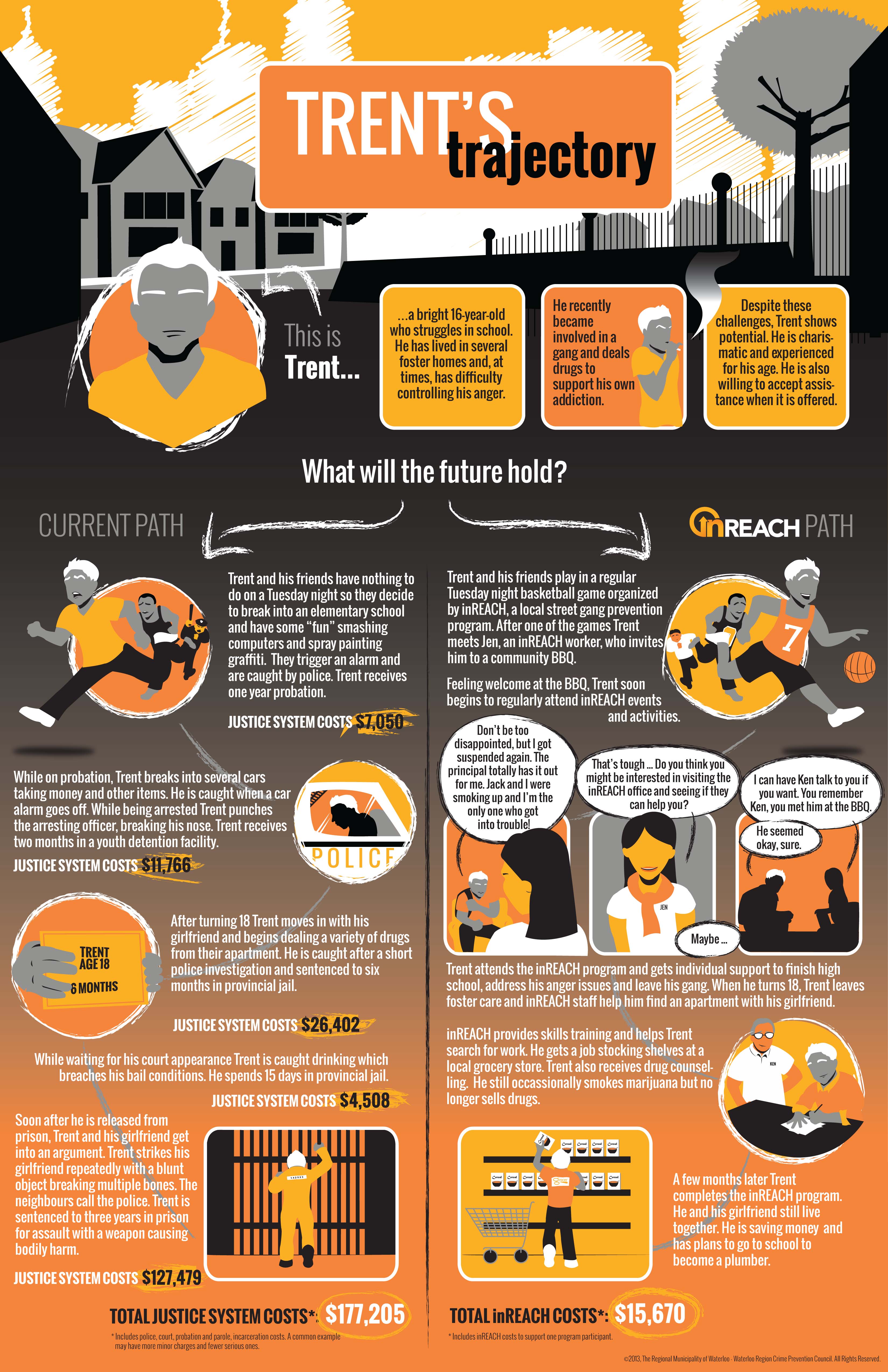
- A new story is needed – guest post by Friend of Crime Prevention, Doug McKlusky
“As a Friend of Crime Prevention, I believe that that the heart of crime prevention is through social and community development…..
Imagine neighbourhoods where everyone feels a sense of belonging, where inclusion trumps fear.
Imagine workplaces where people belong, and where respect and collaboration trump power and politics.
Imagine schools where belonging trumps bullying and streaming.”
- The new story continues…. – guest post by Friend of Crime Prevention, Doug McKlusky
“I do believe that many small actions will add up to a large action on the road to building a community of belonging. It can be as simple as acknowledging the presence of a homeless person in downtown Kitchener, they are part of our community, a friendly smile goes a long way in making a person feel like they belong. I challenge you to do something to make our community a community of belonging, smile at a stranger, volunteer somewhere in your community, it will make a difference, it will connect you!”
- Inspired by inREACH: Reflections of a youth outreach worker – Youth Outreach Worker, Krista McCann
“inREACH fostered a working environment that not only allowed us, but encouraged us to work outside of the box. I’d be lying to say the task was not daunting at first. In my previous experience working as a Youth Worker I had never been given such flexibility and confidence within a position to achieve the desired outcome; an outcome that was not based on the amount of programs ran or number of program participants but the ability to engage youth in their community.”
- Neighbourhood policing: A learning opportunity for Friends of Crime Prevention – WRCPC Student, Ryan Maharaj
“To usher in 2014, WRCPC hosted a learning event on ‘Neighbourhood Policing’. Naturally, Friends of Crime Prevention & WRCPC have a common interest with the police on all things related to crime prevention, community safety and well-being. Inspector Kevin Thaler from the Waterloo Regional Police Service was our guest to unveil the recent sweeping changes to their organizational structure, daily operations and dispatch methods. The results are what is now known as Neighbourhood Policing.”
- Between life and death: Responding to drug overdoses in Canada – former WRCPC student, Kayla Follet
This article appeared in the July 14, 2014 edition of the Waterloo Region Record.
- By the numbers: Wading through police-reported crime statistics 2013 – Anthony Piscitelli
“Statistics Canada released their annual Police-reported crime statistics 2013 report in July (and in French). There is always so much to sift through and interpret. Learn more from the Canadian Criminal Justice Association.”
- By the numbers: Hate crimes in Waterloo Region – Anthony Piscitelli
“In 2009, the Kitchener-Cambridge-Waterloo census metropolitan area (CMA) had the highest hate crime rate in Canada, according to police reported statistics. Did you catch the end of that sentence? “…..according to police reported statistics”. It might seem insignificant, but it might be the key to understanding why the 2009 hate crime rate in Waterloo Region is so high compared to other CMAs in Canada. “
- No clichés: A reflection on working with the youth of inREACH – guest post by Karl Garner
“Having been with inREACH, it became quite evident, that the youth we worked with often experienced clichés in their lives. They were labeled, stereotyped, and their behaviours were often predicted by the adult world around them, yet most of the time no one knew anything about them. Outside of where they lived, or who they hung out with, or the school they went to, or perhaps what they look like, do many even know these youth? The label which is the umbrella they live under is their cliché.”
- Ignoring what we’ve learned. Or, how to ensure street gangs become a real problem in Waterloo Region – Ryan Maharaj
“It’s easy to assume that we should apply what we’ve learned from the inREACH project to better support marginalized youth in our community. But have you every stopped to wonder, what happens if we ignore what we’ve learned? What if we shed the rose-coloured glasses and donned the shades of pessimism to see the barriers that stand in our way? What if we tried to see the glass half empty? How can we make a problem like street gangs in Waterloo Region, worse?”
- The community weighs in on the root causes of crime: change and action – Dianne Heise
“How do we get at the root causes of crime and prevent it from happening in the first place?
This isn’t a direct, straight answer, but, the Waterloo Region Crime Prevention Council believes part of the solution is to monitor the root causes of crime over time. Then we, as a community, can better understand and address the social, community and economic conditions associated with crime and victimization. Check out the Waterloo Region Crime Prevention Council’s report – A Snapshot in Time: The Root Causes of Crime in Waterloo Region to find out how we are doing in early childhood development, employment, community trust and other important indicators.”
….. and part 2 of The community weighs in on the root causes of crime: change and action
- Why communities need neighbourhood-based programming for youth – guest post by Courtney Didier, Alison Neighbourhood Community Centre
“We have worked with youth who have great dreams and aspirations for the future, but have trouble putting their vision into a workable plan. On the other side of the coin, we have worked with youth who have little to no confidence in their abilities, thus requiring a little more encouragement and a little more trial and error in determining what really gets them motivated and excited.”
- Lessons learned in a gang project – Dianne Heise and Rohan Thompson
“Gang Prevention Is…. a) addressing underlying issues, and, b) not about getting a kid to take off the bandana. We often heard – “we’ve got this kid, he’s in a gang – fix him.” So often in our case management and system navigation work, it wasn’t about getting this young person to take off his bandana or to stop hustling or whatever, we never approached the work in that fashion. But it was about the underlying issues and working on them. Mostly we were dealing with issues of poverty, untreated trauma, family breakdown, substance abuse, disengagement and lack of opportunities. These are the problems that young people and gang members and people in general are dealing with. We want to demystify that label of gang member that says their needs are different than any other groups. These same issues are the drivers behind the behaviours.”
So many great reads from 2014. But if you’re in the mood for something to watch, rather than read, might I suggest our newest video on Collaboration!
We look forward to bringing more great Smart on Crime blogs for you in 2015. Better yet, we love hearing your comments, reactions and responses to the posts and guest commentaries. We look forward to hearing more from you next year!
Posted on: June 30th, 2014 by Smart on Crime
We believe in just and humane approaches to crime and its consequences. It says so right in our organizational value statements. And we love it when we can point to other examples of people and organizations walking the talk on this value.
Insight-Out shows that personal transformation can be a powerful force for rehabilitation before punishment. In the United States, “the system profits by its own failure’, remarks Jacques Verduin, Insight-Out founder & facilitator. And he vows to change that, person by person with a year long program called GRIP.
Does society really benefit if we abandon people in prison? What does ‘ just and humane approaches to crime and its consequences’ look like to you? What does it look like in Canada?
Read a full article about Insight-Out on the Daily Good – Guidng Rage into Power.
Posted on: May 14th, 2014 by Smart on Crime
The conclusion of the InREACH project has been the topic of many well-intended discussions at all levels of our community but we haven’t yet moved to the point of integrating the lessons learned to ongoing or upcoming projects.
 On Friday April 11th, the Waterloo Region Crime Prevention Council hosted “Engaging Marginalized Youth: Harnessing Experience from the InREACH Project” to provide a space for a diverse group of community members – individuals, agencies and neighbourhoods that were involved in the InREACH project – to begin moving from idea to action. Our community learned some very rich and important ‘lessons’ from the inREACH project and the gathering was intended to help the community determine “where do we go from here”. A number of promising ideas were brought to the table, but when all the focus is placed on the next steps, we have a habit of overlooking the negative and possibly dismissing the barriers that inhibit successful implementation.
On Friday April 11th, the Waterloo Region Crime Prevention Council hosted “Engaging Marginalized Youth: Harnessing Experience from the InREACH Project” to provide a space for a diverse group of community members – individuals, agencies and neighbourhoods that were involved in the InREACH project – to begin moving from idea to action. Our community learned some very rich and important ‘lessons’ from the inREACH project and the gathering was intended to help the community determine “where do we go from here”. A number of promising ideas were brought to the table, but when all the focus is placed on the next steps, we have a habit of overlooking the negative and possibly dismissing the barriers that inhibit successful implementation.
It’s easy to assume that we should apply what we’ve learned from the inREACH project to better support marginalized youth in our community. But have you every stopped to wonder, what happens if we ignore what we’ve learned? What if we shed the rose-coloured glasses and donned the shades of pessimism to see the barriers that stand in our way? What if we tried to see the glass half empty? How can we make a problem like street gangs in Waterloo Region, worse?
Well, let’s see…
- Never discuss inREACH again
- If you absolutely have to discuss inREACH, hold meetings at inaccessible locations when only few people can attend, and only invite individuals who have the power to tie up discussions with bureaucratic process
- Do NOT, under any circumstances, collaborate or foster relationships with other youth serving organizations because it just makes things messy
- Scrap the evaluation and stick it on a shelf. Treat it like it is only the opinion of the evaluator anyway and discredit it
- Speak FOR the youth; adults and service providers know best. Youth are just too young and don’t know what they want
- If anyone asks you about inREACH, only talk about the numbers – how many youth participated, how many completed, etc. Don’t tell the personal stories of change
- Cut funding for youth programs and foster competition over limited remaining resources…. Better yet, just close the services
- Ensure that the remaining youth services only exist in silos and it is really difficult for youth to access them
- Never convene collaborative opportunities for our community to talk about improving our services
- Burn the rest of the inREACH posters and brochures so the program is effectively erased from our collective memory
- Don’t recognize the contributions of all youth in our community and only hand out awards to those that excel at everything
- Use only images that stigmatize youth
- Keeping focusing on the closure of inREACH as a sign that we can do nothing more for youth
Are you getting the picture? Are you thoroughly depressed by the very thought of these ideas?
I’ve used a technique here called ‘reverse brainstorming’ (with some dramatic effect), to emphasize how ridiculous it would be if we ignored what we’ve learned from inREACH and along with it, the potential for positive change. But the important thing here is that it’s not too far fetched if we really do nothing with the gift of what we’ve learned through the inREACH project. The reality is, our region is a growing community and is very close to larger urban centres. We need to keep a focus on prevention approaches so that street gangs do not become a larger problem in our community.
In a reverse brainstorming exercise, those involved would take each spine shivering negative option and flip it to the positive. That is essentially what happened at the “Engaging Marginalized Youth” event but what to do with it? How do we bring all of these lofty suggestions and grand themes together to collaboratively apply the lessons of InREACH? What can we base our practice on?
While the community is working to shape the next phase of work work with marginalized youth, I offer this resource as food for thought. WRCPC has found the work of Tom Wolff, community psychologist, to be inspiring, grounding, and effective in establishing collaborative practice. He presents six principles of collaboration (Wolff, 2010):
- Encourage true collaboration as the form of exchange
- Engage the full diversity of the community, especially those most directly affected
- Practice democracy and promote active citizenship and empowerment
- Employ an ecological approach that builds on community strengths
- Take action by addressing issues of social change and power on the basis of a common vision
- Engage spirituality as your compass for social change
With these six principles in mind, how can we revisit the reverse brainstorming activity above and critically challenge ourselves? Are we using these principles above in our process of applying and disseminating the lessons of InREACH? We can develop our practice to include marginalized youth. inREACH showed us that. We would love to hear your suggestions and thoughts for next steps either through comments below or during future meetings.
If you’re interested in reading more about the “Engaging Marginalized Youth” event, a summary of the event discussion & next steps is available. WRCPC will do its part in continuing the discussion and they are looking to the community to take further leadership. For more information please contact the Waterloo Region Crime Prevention Council office, by email or telephone, 519.883.2306.
Author: Ryan Maharaj, MSW Student with WRCPC. Ryan recently moved to Waterloo in pursuit of his Masters in Social Work at Laurier University. Placed at the Crime Prevention Council, he has been given the opportunity to explore the role of male allies in the movement against sexual and intimate partner violence. He firmly believes that with respect, support, compassion, and education we can prevent the occurrences of sexual violence in the next generation.
Posted on: April 17th, 2014 by Smart on Crime
We all agree that both the direct and indirect victims of crime deserve society’s help and support. Victims want services to help them come to terms with their trauma, loss, and grief so they can move on. Government supported services, compensation for their injuries, and measures to prevent both the occurrence and reoccurrence of crime are important to victims of illegal action. Recently, the Victims Bill of Rights has proposed to provide this support not by establishing government programs for victims’ assistance but instead by giving victims legal rights and a role at the heart of the justice system. But this role for victims represents a departure from the principles of criminal justice embedded in our legal tradition and protected by the Charter of Rights and Freedoms.
Progress in the development of criminal law was marked by an evolution away from private disputes between victims and alleged wrongdoers and toward the administration of justice by the state. As mentioned in October 27, 2013 opinion piece in the Star:
“one of the greatest innovations of the criminal justice system was the realization that the wrongful injuries people inflict are primarily offences against the public moral order represented by the Queen, not just particular harms to individuals in a given situation.”
While individuals could sue in civil cases to recover for losses resulting from wrongdoing, it was the state that ensured that punishments for wrongdoing responded to criminal harm as an injury to the values of a stable, secure society. In this role, the duty of the state was to punish the criminal harm to the victim while still respecting the basic humanity of the criminal. This second branch of the state’s duty secured the rights to fair trial and appropriate punishment on conviction for the accused, which are the hallmark of the just society. The era of the blood feud and the personal vendetta was over.
The extent to which the present Victims Bill’s ‘rights’ will in fact put victims at the heart of the criminal justice system may be illusory. Bill C-32 is clear that the only parties in the criminal justice system will continue to be the accused and the Queen. The Bill also provides that the rights of victims will be applied in a reasonable manner so as not to disrupt the “proper administration of justice” by causing delay or interfering with the discretion of the criminal justice system decision makers. Victims are expressly not made parties, interveners, or even observers in any criminal justice proceedings. No right to seek a judicial remedy, no claim for damages, and no appeal arises if victims’ rights are infringed. Expectations by victims about their entitlements from the justice and corrections system may well exceed what already over-burdened justice and correction officials are able to provide and victims may well feel disappointed by their newly acquired rights. The only remedy provided in the Bill for that disappointment is the capacity to file a complaint. In view of all these limitations, victims may well come to question whether they received a Bill of Rights or a Bill of Goods.
Definition of Victim
‘Victim’ is defined broadly in the Bill as an “individual who has suffered physical or emotional harm, property damage or economic loss as a result of the commission or alleged commission of an offence”. The offender is expressly excluded but his or her family members who may have incurred harm or damage as a result of the crime are not. If the victim is deceased or incapacitated, the Bill specifies the next of kin or care provider who may exercise the victim’s rights. While the definition of victims refers to ‘individuals’, ‘communities’ are also authorized to make victim impact statements. It is unclear what collection of interests will constitute a ‘community’ and whether community victim impact statements will be considered at all stages of the criminal justice process or just at sentencing.
Rights for Victims
Bill C-32 includes four categories of rights for victims relating to information, protection, participation, and restitution. Generally, providing information about the criminal justice and corrections system and ensuring adequate protection for victims in the criminal justice system is desirable as long as they do not infringe the accused’s ability to make full answer and defense or privacy rights. Since it is the proposed rights to participation and to restitution that pose the most significant challenges to maintaining a fair and effective justice and corrections system, we will concentrate on those.
The victim’s participation rights include the right to convey and have considered his or her views about decisions to be made relating to the investigation, prosecution, and adjudication of the alleged offence and also regarding the corrections and conditional release process. As written, this appears to include the right to provide victim impact statements at each stage which will have to be taken into account.
Unavoidably, these new procedures will cause delays. Despite falling crime rates, the criminal justice system is already overburdened and slow. Long waiting times are not only difficult for those awaiting trial, particularly if they are in detained in remand facilities, but they can violate rights to a speedy trial resulting in an inability to bring an accused to justice. Decision makers in the justice system try to move cases toward resolution as efficiently and fairly as possible. Not only will these decision makers be required to provide information to victims who request it, but they will now be asked to consider the views of the victims about the decisions they are required to make. The decision maker will also be compelled to receive and consider a victim impact statement. While this would take time even if there were only one victim, it would become quickly unmanageable with complex cases involving multiple victims, such as a sophisticated fraud or terrorist incidents. If the stated participation rights of victims lead to costly delays or result in prosecutions having to be dropped due to violations of the Charter right to a speedy trial, is justice served?
Further, victims’ participation rights could conflict with justice officials’ obligations to make impartial decisions when exercising their discretion. For example, a prosecutor may decide whether to proceed to trial with charges based on the public interest and the likelihood of a conviction. A victim impact statement reflecting the trauma experienced by the individual may not be relevant to the determination facing the prosecutor yet he or she would be required to consider it. It is not in the public interest to proceed to trial if there is no chance of a conviction despite a prosecutor’s sympathy for the plight of the victim.
Bill C-32 provides that every victim has the right to have the court consider making a restitution order against the offender and have it enforced as a civil court judgment. The introduction of a right to have monetary order for the victims considered by the court skews both the principles and practices of the criminal justice system. As already discussed, most modern criminal justice systems have evolved away from a system of monetary penalties paid by the criminal or the criminal’s family to the victim. Some countries still have criminal justice systems that include ‘blood money’ — a pay out to victims in satisfaction of a crime. With the proposed Victims Bill of Rights, this outdated practice could be revived in Canada.
While empowering judges to consider ‘restitution’ and even ‘compensation’ is not new, these concepts have been embedded in criminal justice principles. ‘Restitution’ historically had been based on principles of precluding unjust enrichment and benefitting from one’s crime. If a person had stolen property or had sold it, the court could order the property or proceeds of the sale be returned. Over time, the understanding of ‘restitution’ changed to include damages for harm caused to the victims. Orders for restitution or compensation became sentencing options for the judge to consider in assessing the totality of the punishment. In this way, the monetary award is limited by what was a fair and proportionate penalty for the offence. If the offender paid a monetary award, this would discharge some of all of his or her punishment for the crime. Nothing precluded the victim from seeking further damages through a civil court process.
Fines and other punishments involving monetary payment by the offender raise some profound fairness issues in the criminal justice system. Simply put, it is much less onerous for a wealthy person to pay a fine than a poor one. Unless something like a day-fine system is adopted where the fine is based on percentage of income, then this type of sentence violates the equality of punishment essential to a fair criminal justice system. Accordingly, judges have imposed fines, surcharges, restitution and compensation orders with restraint.
While normally judges are required to assure themselves that the offender is capable of paying a fine before imposing it, the Victims Bill of Rights specifically provides that the offender’s financial means or ability to pay does not prevent the court from ordering restitution. Far too many accused are poor, marginalized, battling mental health and addictions and without the lawful means to provide financial compensation to others. If a judge does not impose restitution as part of the sentence, he or she will have to explain why. Judges will likely feel more pressure to make these awards.
The preference for restitution orders also builds an undesirable incentive into the system. With the possibility of having damages covered by just filing a form with the courts, how many more people will identify themselves as victims? How many victims will forego the possibility of an easy recovery of losses to participate in restorative justice practices or other measures that might resolve the issue outside of the formal justice system?
The rights to restitution run the risk of inappropriately importing civil justice concepts into the criminal justice system and undermining core principles of fairness.
Conclusion
The Victims Bill of Rights creates a tension: If the victims’ rights as set out in the Bill are applied, they threaten to undermine principles of criminal justice by placing victims at the heart of the criminal justice. This would erode core principles by slowing down an already overburdened system and skewing it toward a tool for personal vengeance and away from objectivity. If the victims’ rights as set out in the Bill are not applied, then victims will be disappointed and their confidence in the criminal justice system will be further reduced. And there is every reason to believe that the promised rights for victims will fall short of expectations. The Bill provides victims with no standing in the proceedings, a complaint mechanism as a remedy for breached rights, and requires that the Bill be interpreted reasonably so as not to delay proceedings or interfere with the discretion of justice system officials. Rather than create a tension between justice principles and victims’ rights that will be felt by victims and justice and corrections officials at every stage of the system, it would have been better to focus on rights to victims’ services, state-guaranteed compensation, and victim prevention measures. These would have addressed some of the real needs of victims without creating likely harmful pressures and unrealistic expectations of the criminal justice system.
 Author: Catherine Latimer spent many years as a legal policy analyst for the federal government, both at the Privy Council Office and later as the Director General of Youth Justice Policy at the Department of Justice.
Author: Catherine Latimer spent many years as a legal policy analyst for the federal government, both at the Privy Council Office and later as the Director General of Youth Justice Policy at the Department of Justice.
In 2011, she became the Executive Director of the John Howard Society of Canada, a charity committed to just, effective, and humane responses to crime. Ms. Latimer has a law degree from Queen’s University and a M.Phil. from the University of Cambridge.
She is also a part-time professor at the Faculty of Law, University of Ottawa. Her interests are in criminal justice, youth justice, corrections laws, human rights, justice systems programs and policies, and policy and law reform.
Reprinted with permission from the author.
Posted on: April 10th, 2014 by Smart on Crime

My path in crime prevention started almost 20 years ago; my formal path that is. But, even prior to that, my work with those who were marginalized and/or victimized was also “crime prevention”. I just didn’t know it then. I certainly didn’t call it that. I know better now!
Justice goes well beyond the walls of courthouses and prisons to the heart of citizen capacity and imagination. In a way, justice lives in a tension between security and democracy. Security, of course, frequently uses methods to exclude certain people from certain places. Democracy, on the other hand, can be measured by the extent of our willingness and ability to include all people. Places where everybody matters, even those, or maybe especially those, who make us somewhat uncomfortable, are something to aspire to in democracy. But measures of security will often tell us the opposite. Herein lies the rub. And it is often no more obvious than in our interventions with youth.
Throughout time youth have caused us some discomfort. Not because of whom they are, but because of the associations that have been created between youth and crime. How we treat those who are in that critical transition between childhood and adulthood is an essential measure of the character of our community. How we interact with youth, how we express ourselves to and about them, says so much about us. It may not actually have a whole lot to say about them.
“We must learn to work for young people but also with young people. Our society must learn to trust them and avoid generalizations which stigmatise them, or portray them as potential criminals. The challenge to us all is to guarantee the legitimate right to safety of each and every person without discrimination and the scapegoating of youth.” (European Forum on Urban Safety, 2000).
It is good news then that progress often seeds itself in grounds of dissonance. Discomfort can be an opportunity for growth and learning if we only allow it to be.
inREACH was a golden opportunity. It brought discomfort in so many ways that we can only be grateful. We got to test assumptions about youth generally and street gang prevention specifically. We ended up rocking our boat of easy answers.
I am no expert in crime prevention. I have searched high and low for such person and have yet to find one. I am certainly not it. There are no bumper stickers in crime prevention no matter who brings them to you (and sometimes those who bring them have formidable power). The issues of crime, youth crime and street gang related crimes are immensely complex. They defy convenient truth. Sure, it is true that there is solid evidence to suggest that some children and youth are a greater risk of coming in conflict with the law. There is also solid evidence to suggest that this can be prevented. It would therefore make a whole lot of sense that we invest more in preventing children and youth from becoming involved in crime than we do in warehousing them through their teenage and adult years. But such sustained commitment to community safety can only thrive in an environment that distinguishes facts from fiction. And few things seem to be as fraught with myth and fiction as youth crime.
And that was the whole point. inREACH was about learning what works not what we believe to work. And whenever we are on a learning path we will encounter screaming successes as much as fabulous failures. At inREACH we had to not only dispel the overused myth that connects youth and crime, we also had to dispel the myth of singular professional expertise, as well as the myth of being a community where inclusion and collaboration are always easy. We finally had to learn that outcome measures are an empty promise at the beginning of such journey.
What a gift!
And without the voices of youth and true efforts at inclusion that gift would not have been possible.
But “kids at risk” are not supposed to be engaged in shaping public policy; they are supposed to live at the fringes of the community – not on its stages. But we found that listening is a most powerful method for changing trajectories. Listening can begin to untangle the complex interplay of individual traits, family, community, and wider social supports. And when we listen we learn so much.
- We learned that risk factors do not follow a neat mathematical “1+1 = 2” formula. As much as one more risk can bring a person to the precipice of crime, so one resilience factor can stop him or her from falling off. This resiliency can be sparked by a significant adult who refuses to give up, a teacher with an eye not only to the irritating behavior but the roots of it, a school that deals with the social inclusion first and academics next, programs which assist stressed families by first and foremost meeting their essential needs of life.
- We also learned that we can ALL be essential partners in this quest for safer communities and civic vitality if we make the connection between basic needs (such as food and shelter) and meaningful engagement, sense of belonging and viewing others as opportunities not threats.
- We also learned that knee-jerk reactions, approaches rooted in fear, or a philosophy of blame are the greatest barrier to successful prevention.
In the never ending circle of seeking who is to blame we have become confused and numb to our own opportunities to be part of scripting a whole new story about us and the young people among us – ALL young people. In a way, inREACH was an opportunity to test our resolve to focus on prevention sometimes despite of it all. It was our opportunity to wiggle in discomfort as we sought out momentums for sustainable change.
The moral of the inREACH story is that no one system alone is equipped to deal with the complexity of gang related crime. We had to work in partnership. It was not a choice. Hats off to Dr. Spergel for saying all that so many years ago, long before we ever even conceived of inREACH. But “partnership” is not an old boys/girls club or tired relationship on auto pilot. Partnership is a vital agreements to work together, to share a vision, to establish a set of values, to be held collectively accountable, to disagree, and disagree some more, but to never stop moving forward together. Partnership does not end at the board room doors but rather moves us into the heart of the service we provide. That was the task we set for ourselves and it was a difficult task indeed.
The confession that easy answers are little else than a distraction from the larger social and community roots goes hand in hand with the invitations to citizens to overcome such psychology of learned helplessness. Learned helplessness is the outcome of a gradual but persistent chipping away at our collective confidence that anything can be changed let alone that we can be part of that change agenda.
Ask most people what to do about crime and at first they reach for the 911 dial. Give them the opportunity to recognize the power of everyday action and they can rally together in a way that goes beyond our wildest imaginings. The neighbourhood mobilization work of inREACH exemplified that more than anything I have ever seen. From parents to teachers to artists; when we merged the stories of those in social services with the stories of everyday citizens and those with lived experience, a comprehensive plot emerged in which truly everybody mattered.
Too often have we developed services first and the asked why. In this “we know what is best for you” mentality we often even maintain programs out of tradition, not because they worked. Such skewed problem solving is, at least in part, the outcome of organizational distance to the people we serve. inREACH youth came up very close and personal. And we were and are richer for it.
Some answers of convenience are not wrong in and off themselves. They are just wrong by way of their omissions. inREACH youth had a voice and in hearing that voice we designed an approach that was rooted in their reality even if it wasn’t always popular or comfortable. In helping them to break their silence we had to face our own fear of contempt, censure, judgement or lack of recognition. But in the words of Audre Lorde: “The fact that we are here is an attempt to break the silence and bridge some of the difference between us, for it is not differences which immobilize us but silence”.
I so look forward to tomorrow. Tomorrow is our chance, free of the confines of funding (yes there is freedom in not being funded) to again amplify the voices of those who live and lived it, and those who had the courage and wisdom to live it with them.
In the end, it is up to all of us to say: OK! We hear you! Now what?
Author: Christiane Sadeler is the Executive Director of the Waterloo Region Crime Prevention Council.
Posted on: April 7th, 2014 by Waterloo Region Crime Prevention Council
Before inREACH ended in December 2013, I shared 5 important lessons learned from the inREACH gang prevention project with the Waterloo Region Crime Prevention Council. While project funding has ended, some parts continue and there is much to be learned about addressing youth gang involvement in our community for the future. Here are some highlights.
1. What are your assumptions and values?
We need to ask ourselves this central question – what are the fundamental assumptions and beliefs we have about the young people we work with? Do we feel people are broken and need to be fixed? Or – do we believe people are full of capacities and if supported correctly, they can realize their potential? I’m not saying people don’t come with their problems, but the question is what are we focused on because that informs how you do the work. It took us a while to get this right. This idea was expressed well by a youth participant:
“It’s…for us, run by us and gonna involve all of us..What do you want to see in your community, and what are your personal talents or anything that is special to you that you want to show everybody else, and maybe those people might like it too right? So- opening new opportunities. It’s not just to keep kids off drugs but for under-privileged kids, kids who may have never had a chance to be part of something like you know…discover their love of art…so it’s giving everybody a chance to actually do…the things they want to do, so that’s why I started coming.”
This is powerful because it’s raising the bar. It’s not just getting youth out of the gang – but getting them into a job or back in school and even realizing some of their hopes and dreams. If you believe that people are full of possibilities – then the work is geared more to helping people realize that potential versus simply preventing them from doing something.
2. Gang Prevention Is:
- addressing underlying issues
- not about getting a kid to take off the bandana
We often heard – “we’ve got this kid, he’s in a gang – fix him.” So often in our case management and system navigation work, it wasn’t about getting this young person to take off his bandana or to stop hustling or whatever, we never approached the work in that fashion. But it was about the underlying issues and working on them. Mostly we were dealing with issues of poverty, untreated trauma, family breakdown, substance abuse, disengagement and lack of opportunities. These are the problems that young people and gang members and people in general are dealing with. We want to demystify that label of gang member that says their needs are different than any other groups. These same issues are the drivers behind the behaviours.
3. Gang prevention is:
- increasing engagement and inclusion
- working at individual and community levels
Young people demonstrated so clearly that they WILL engage. This matters because pro-social relationships and connections are essential for preventing youth from participating in gangs.
Unfortunately, adolescents and young adults are much less involved in community activities than other groups, particularly those experiencing marginalization due to where they live or challenges they face. Researcher Mark Totten says “there is an epidemic of social exclusion in Canada.” inREACH very successfully supported young people’s inclusion and engagement, in community centres, recreation, school, employment, services and more. This is a promising way to build assets and address risk factors in a holistic and non-stigmatizing way. However, it wasn’t just about engaging individual youth. The community was also mobilized and systems needed to make some changes in order to be more inclusive.
4. inReach is an example of an effective hub model
inReach is a comprehensive wraparound hub model demonstrating an effective way to support young people. It was comprehensive because all the right supports, services, staff and organizations were involved. It was a mobile hub which was key for meeting young people where they’re at – whether at the office, Tim Horton’s or their home. Dedicated multi-disciplinary teams brought diverse skills to the work and learned strategies and skills from each other. It was not done at a desk.
5. You Need The Right People On The Bus
You need to have the right people and organizations involved in the project and that was really key to the success of inREACH. People have to be there for the right reasons, share the same vision and be able to check their egos at the door. It can’t just be about what’s good for your own organization. Collaboration requires a thoughtful discussion before you bring people on the team. Everyone involved with inREACH was fully invested and went above and beyond because they were passionate and believed in it.
The community should be proud of all that it has accomplished.
Co-authors: Dianne Heise & Rohan Thompson – Dianne Heise is the Coordinator of Community Development and Research with the Waterloo Region Crime Prevention Council and worked with the inREACH project while she was a Master of Community Psychology student at Wilrid Laurier University. Dianne also worked on the final evaluation of the inREACH project with Dr. Mark Pancer (WLU).
Rohan Thompson was the Project Manager for the inREACH Street Gang Prevention Project (2010 – 2013). At the end of the project, Rohan returned to his role with the City of Kitchener.
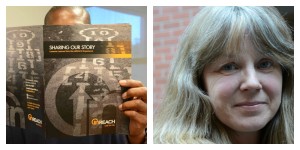
Rohan Thompson (L) and Dianne Heise (R)





























 On Friday April 11th, the Waterloo Region Crime Prevention Council hosted “Engaging Marginalized Youth: Harnessing Experience from the InREACH Project” to provide a space for a diverse group of community members – individuals, agencies and neighbourhoods that were involved in the InREACH project – to begin moving from idea to action. Our community learned some very
On Friday April 11th, the Waterloo Region Crime Prevention Council hosted “Engaging Marginalized Youth: Harnessing Experience from the InREACH Project” to provide a space for a diverse group of community members – individuals, agencies and neighbourhoods that were involved in the InREACH project – to begin moving from idea to action. Our community learned some very  Author: Catherine Latimer spent many years as a legal policy analyst for the federal government, both at the Privy Council Office and later as the Director General of Youth Justice Policy at the Department of Justice.
Author: Catherine Latimer spent many years as a legal policy analyst for the federal government, both at the Privy Council Office and later as the Director General of Youth Justice Policy at the Department of Justice.
